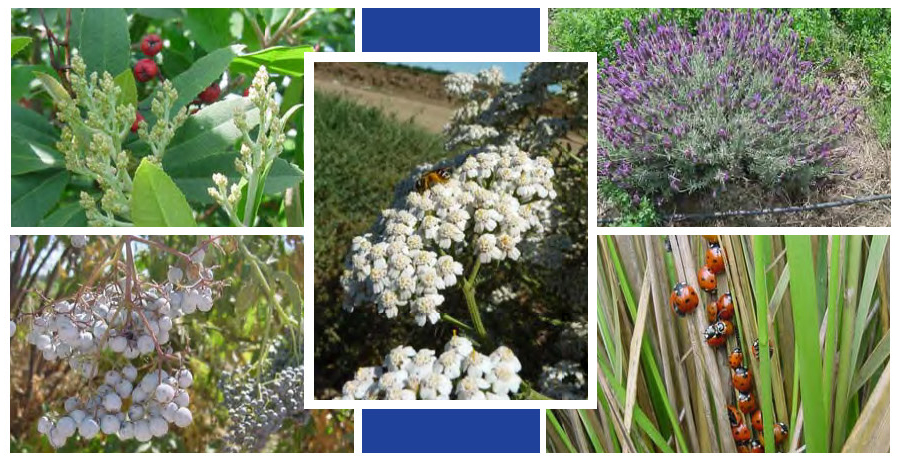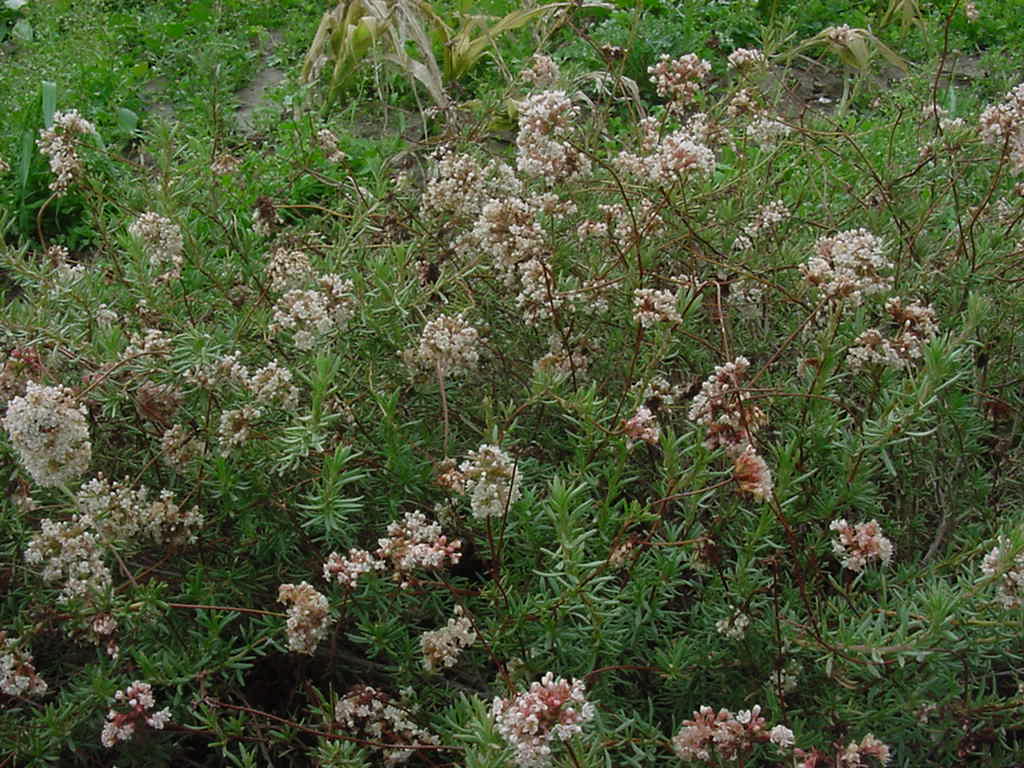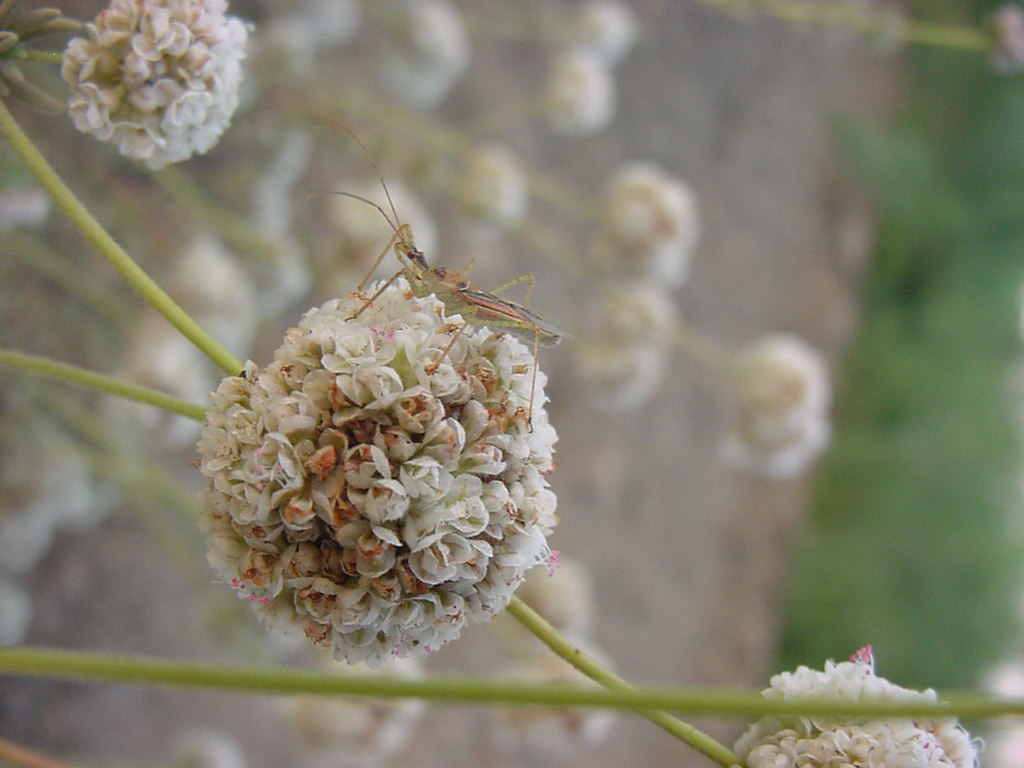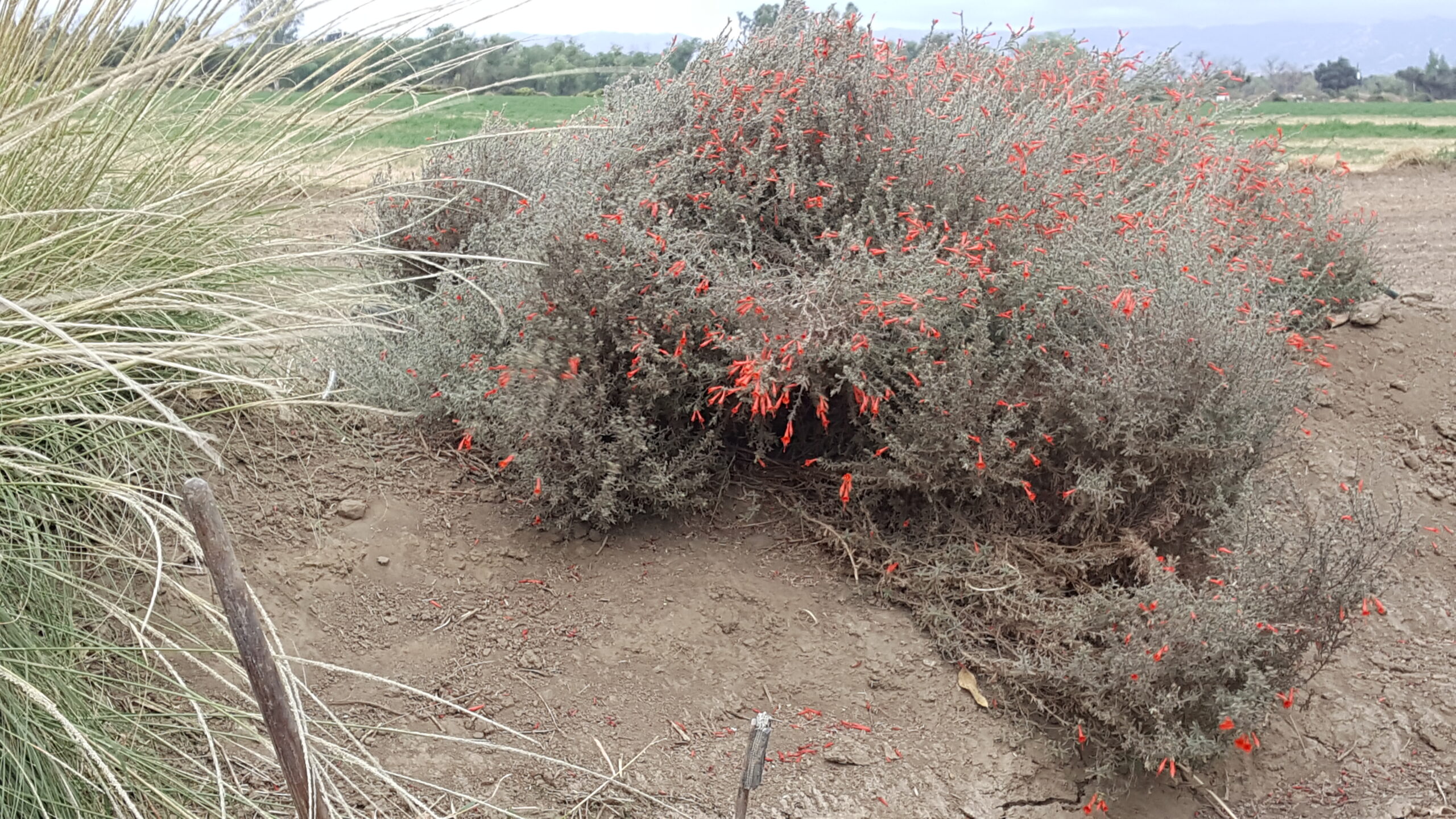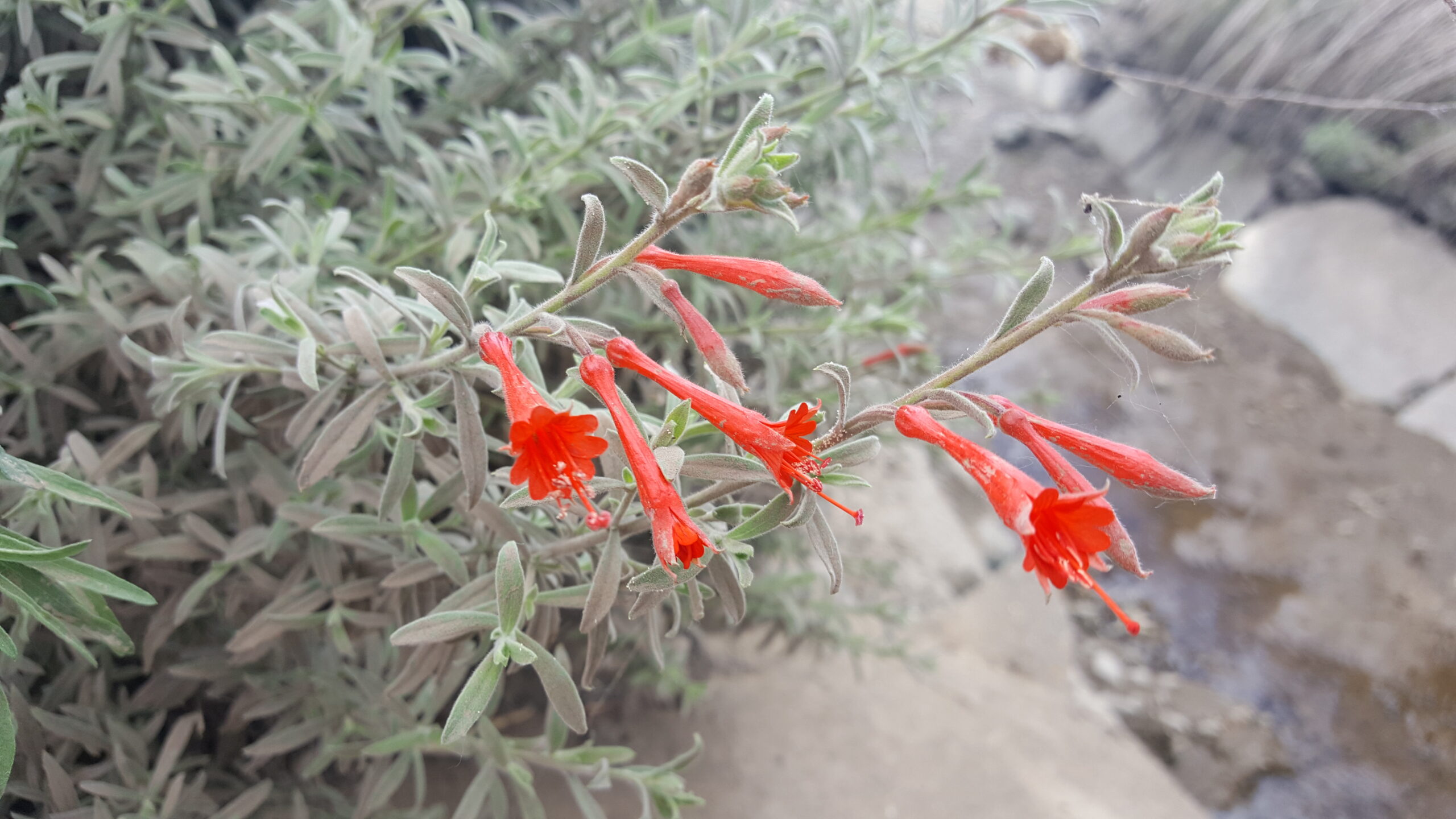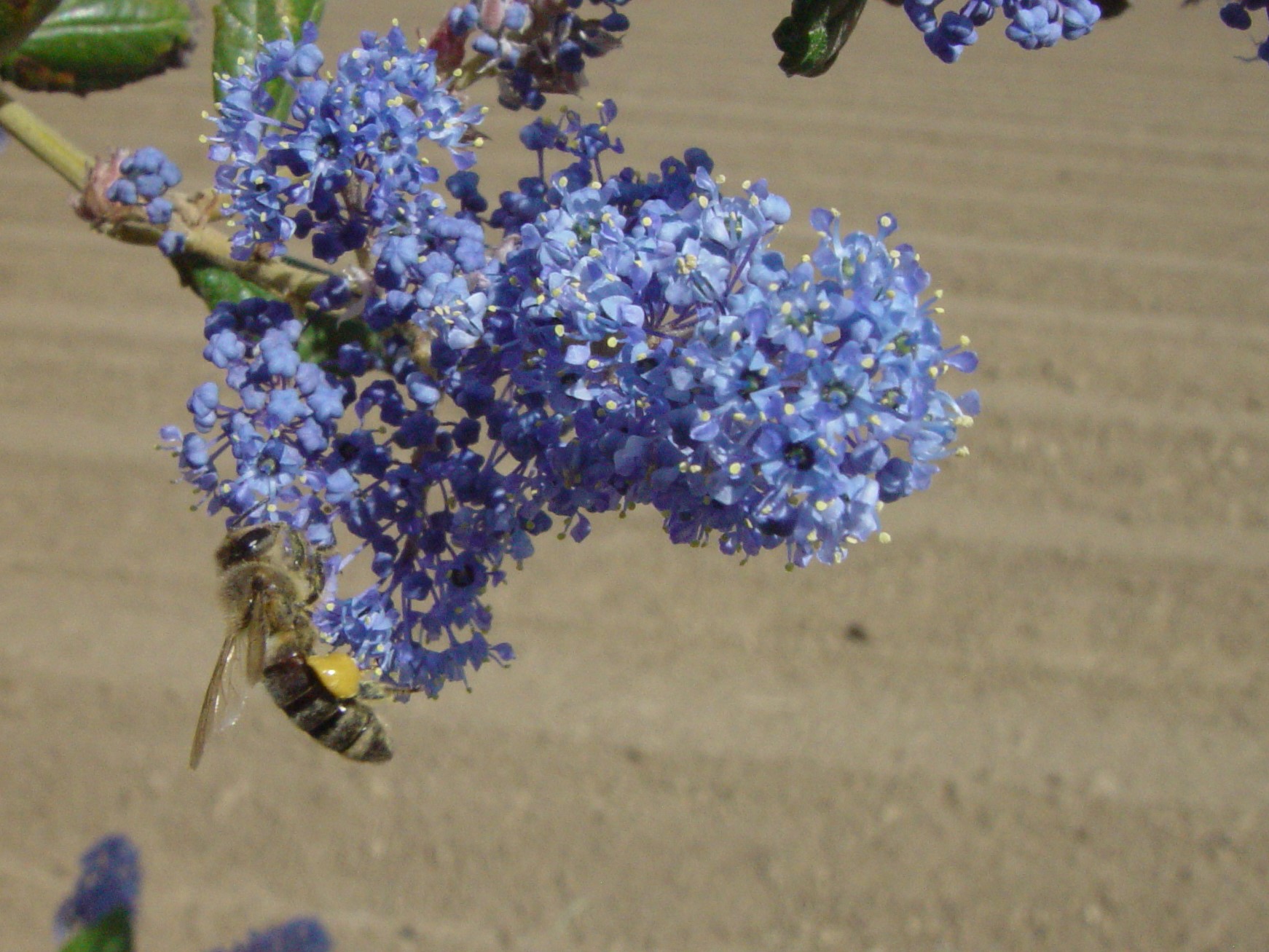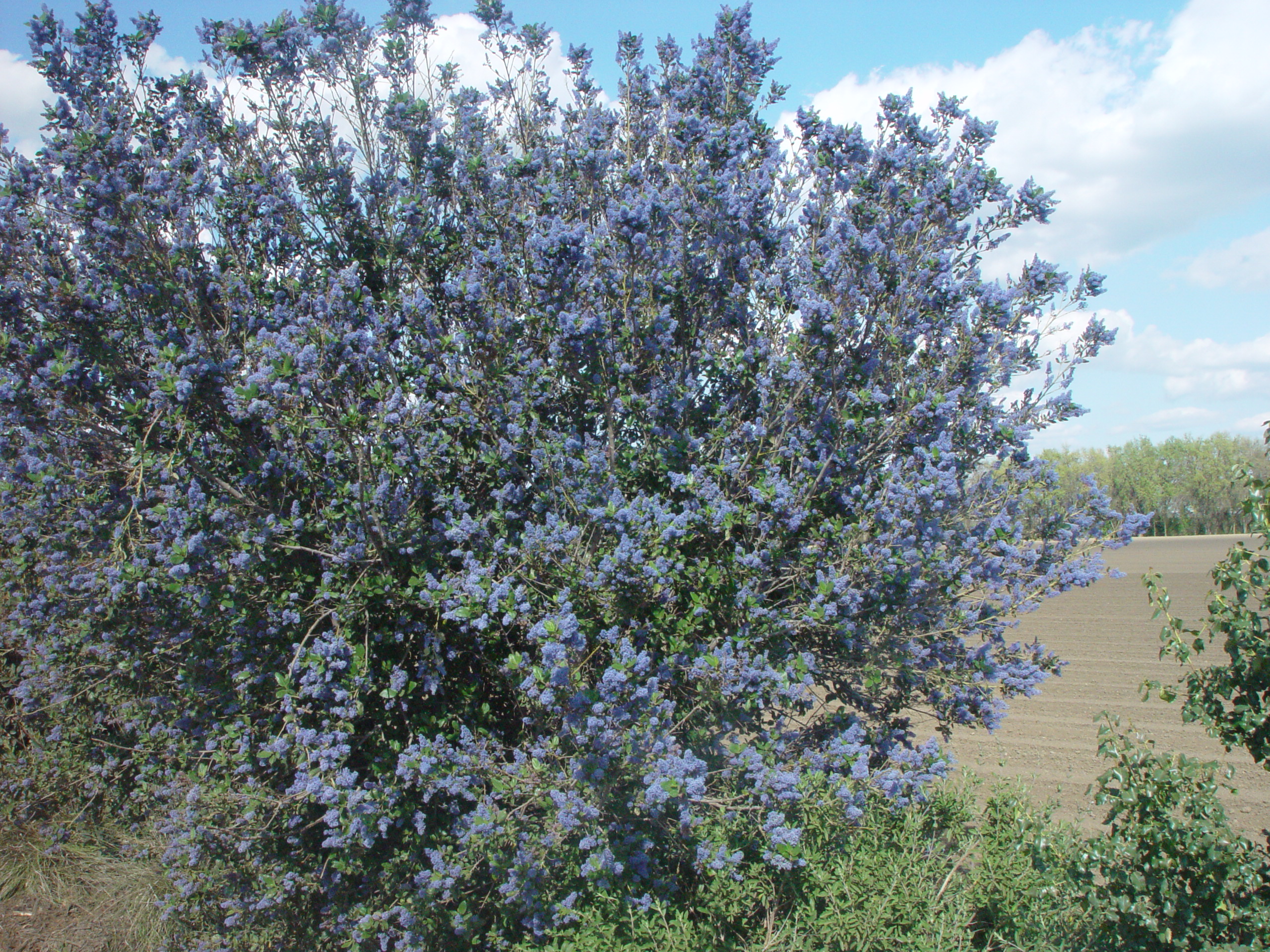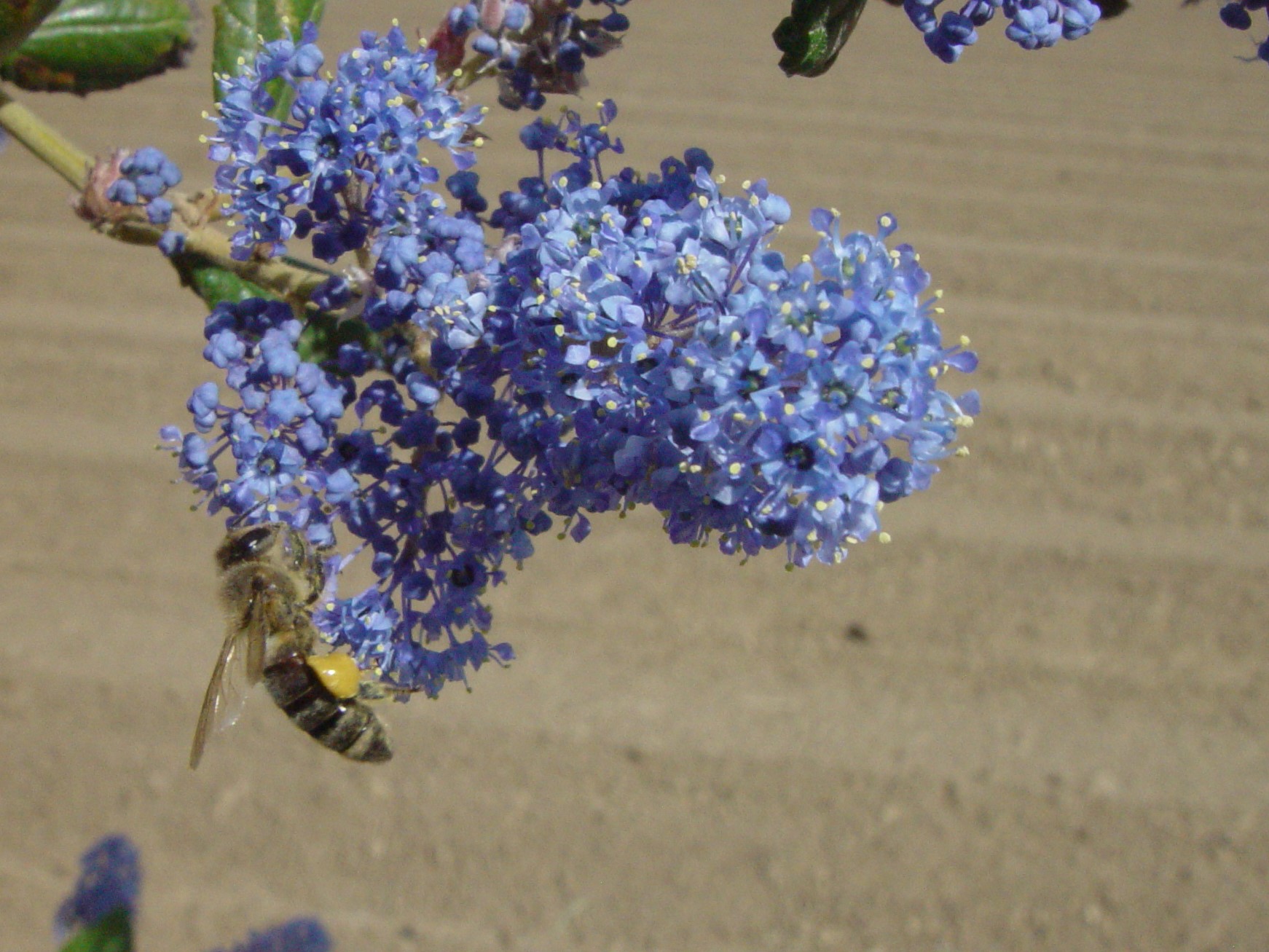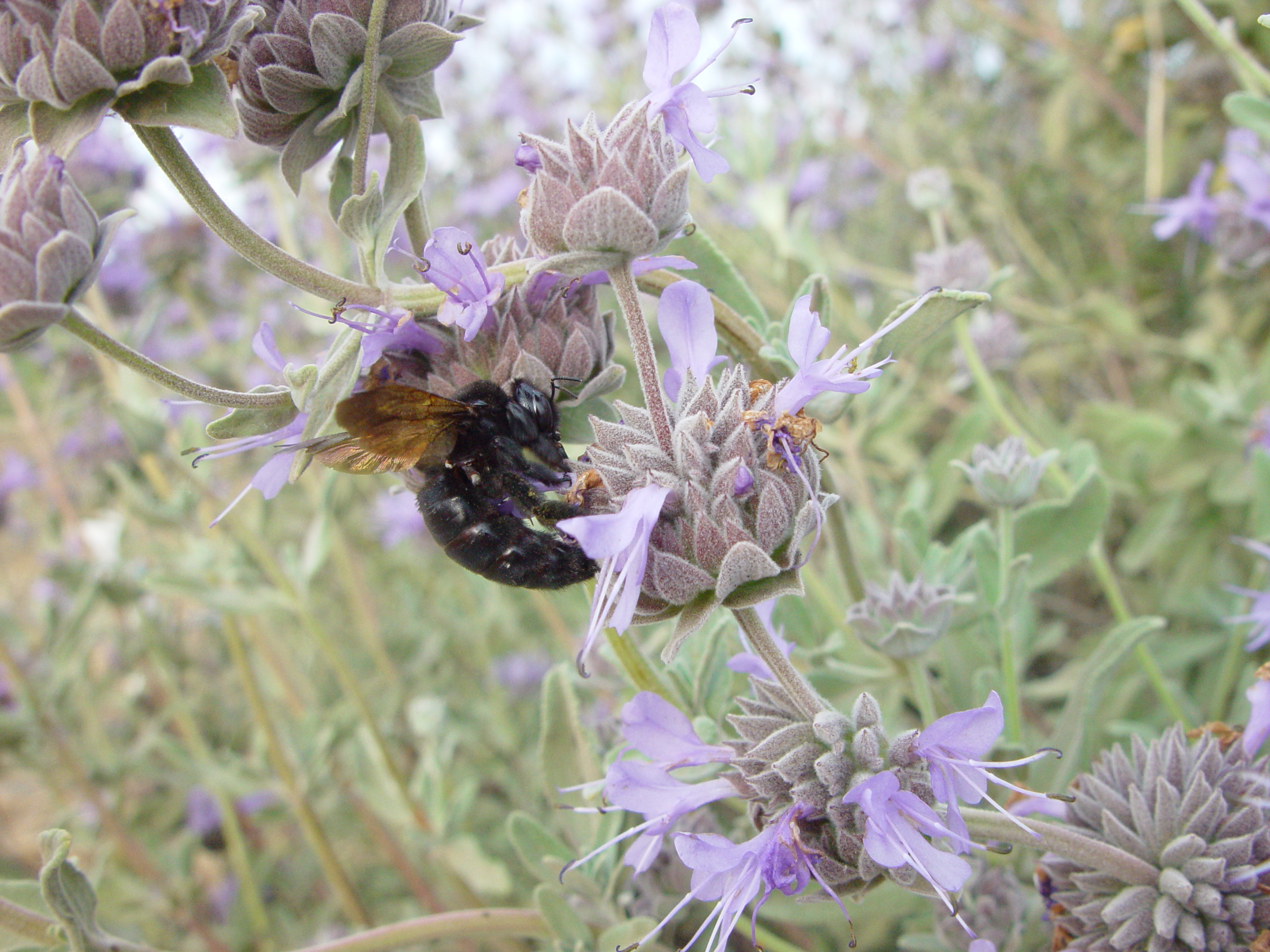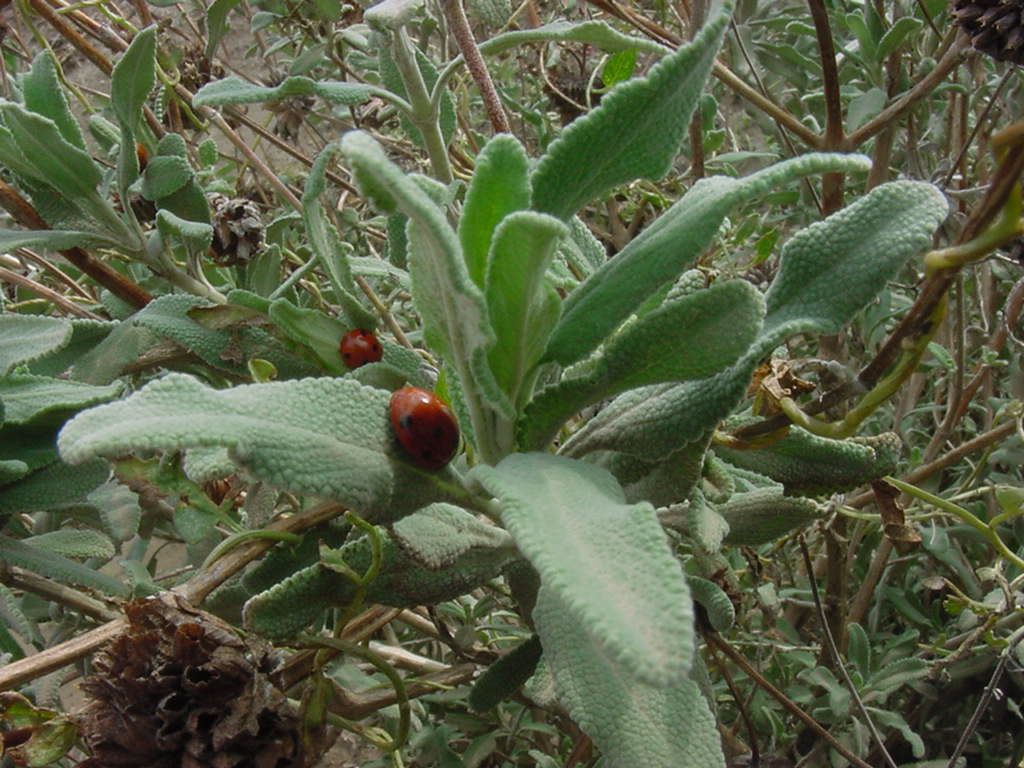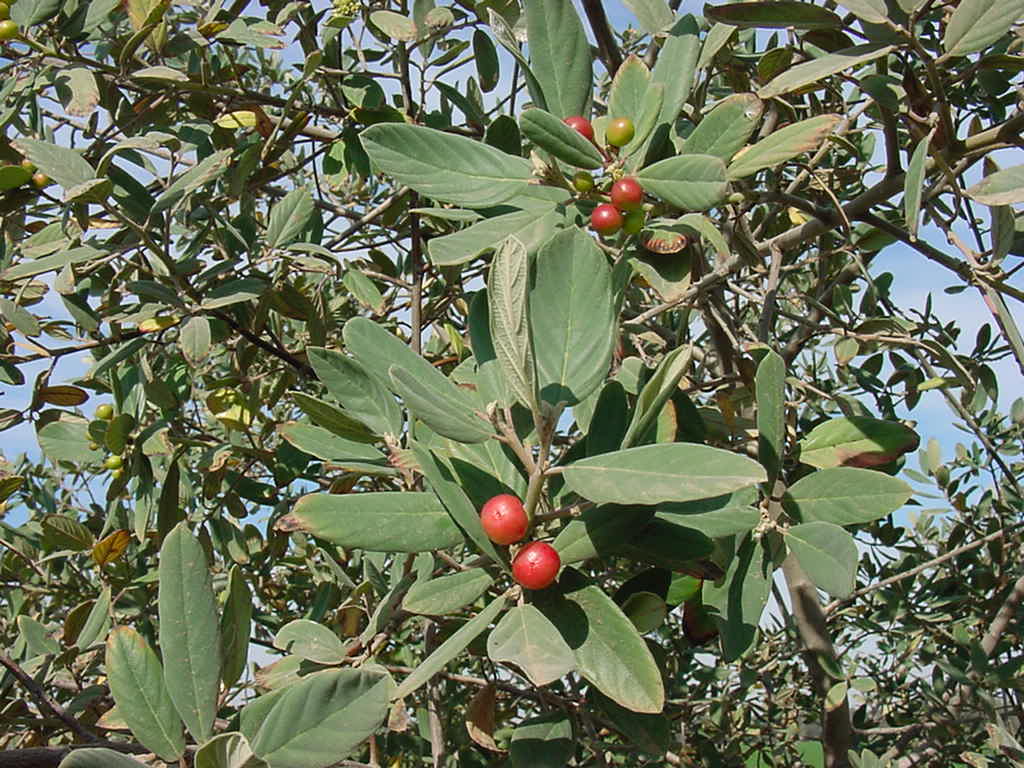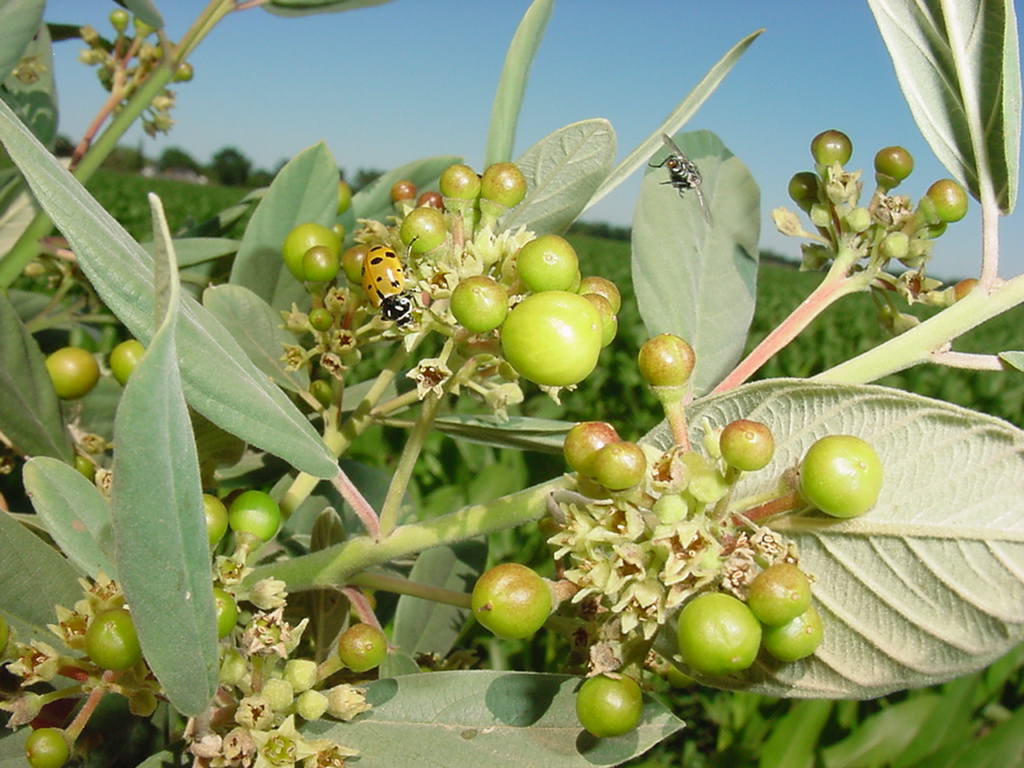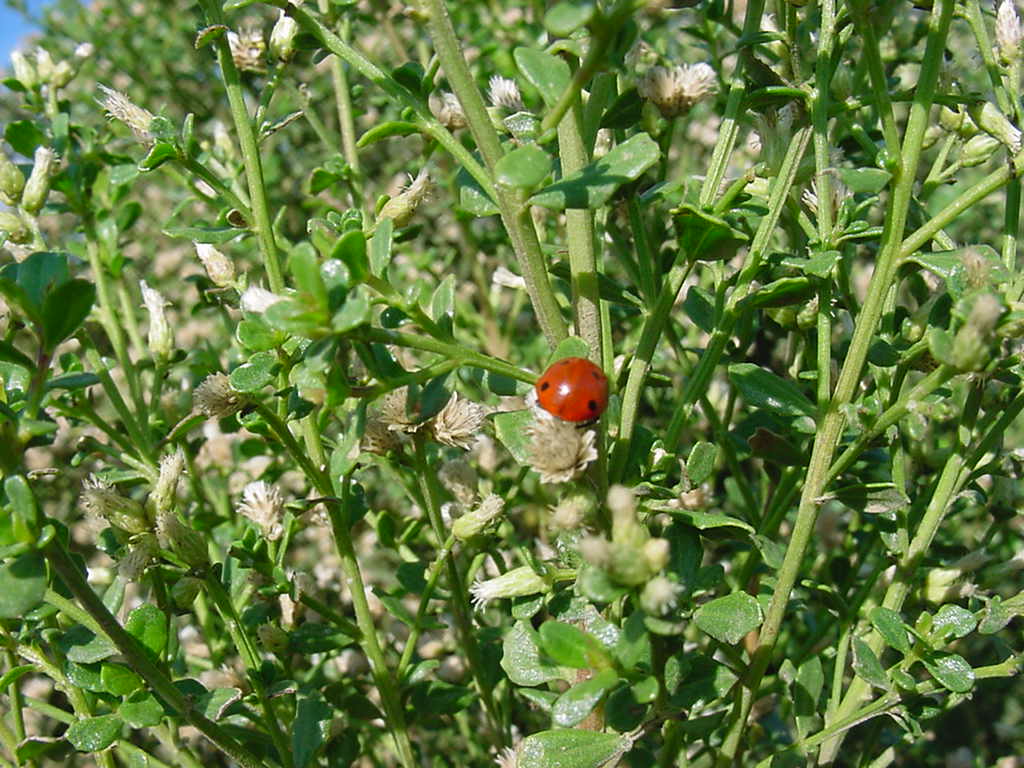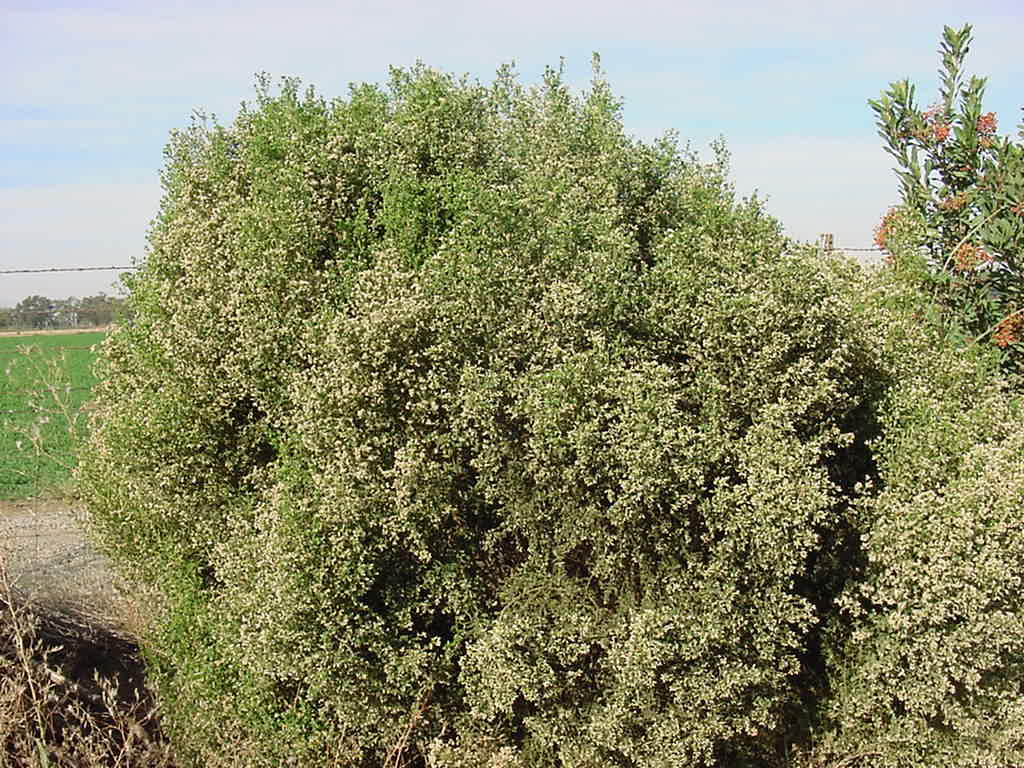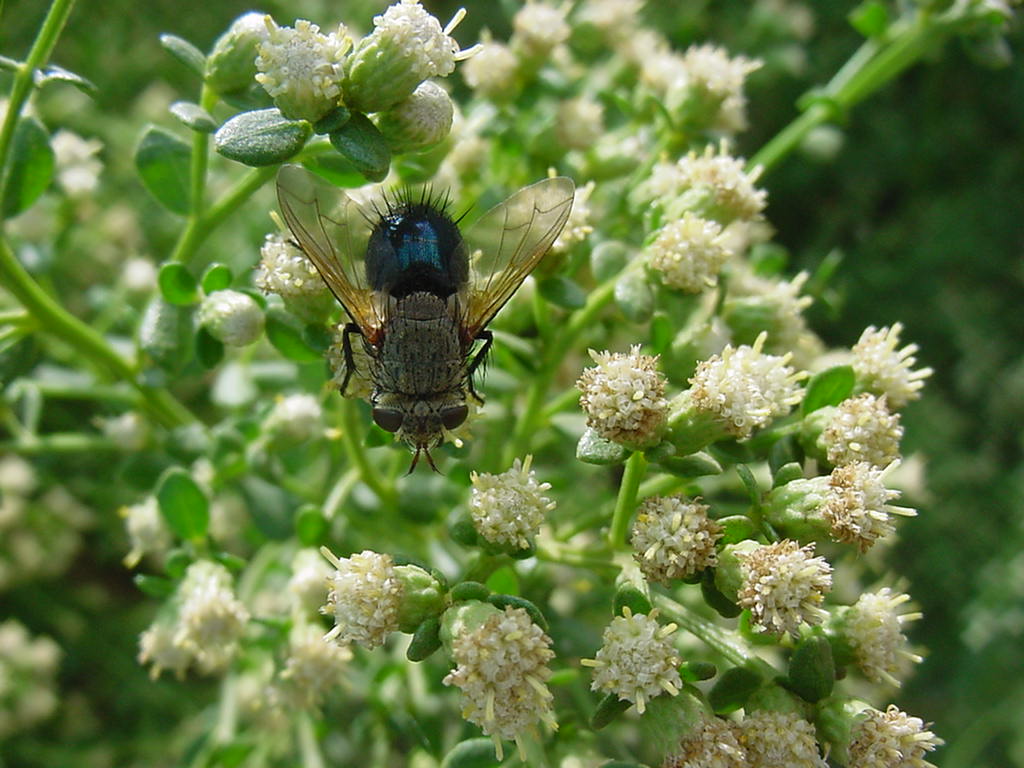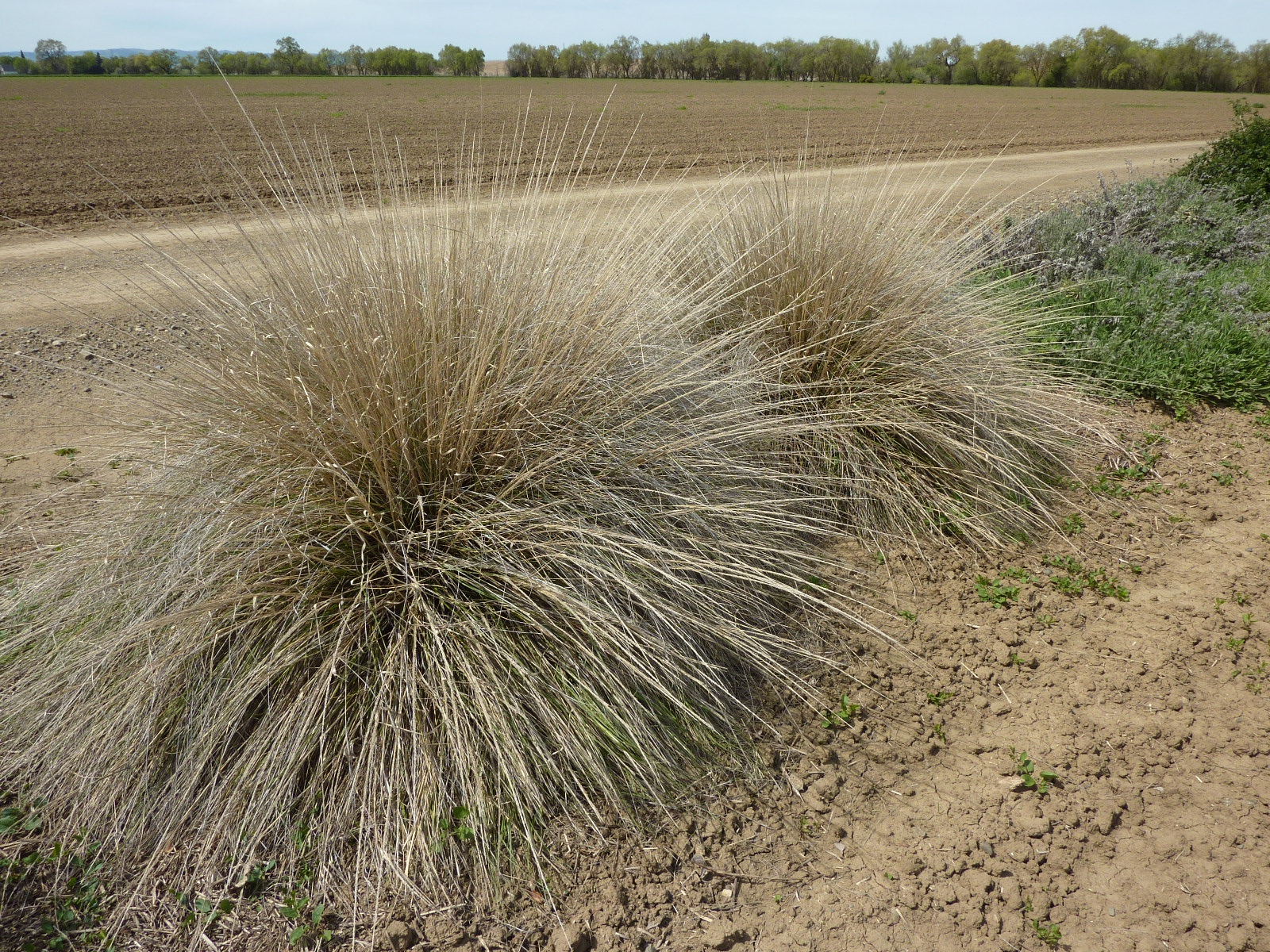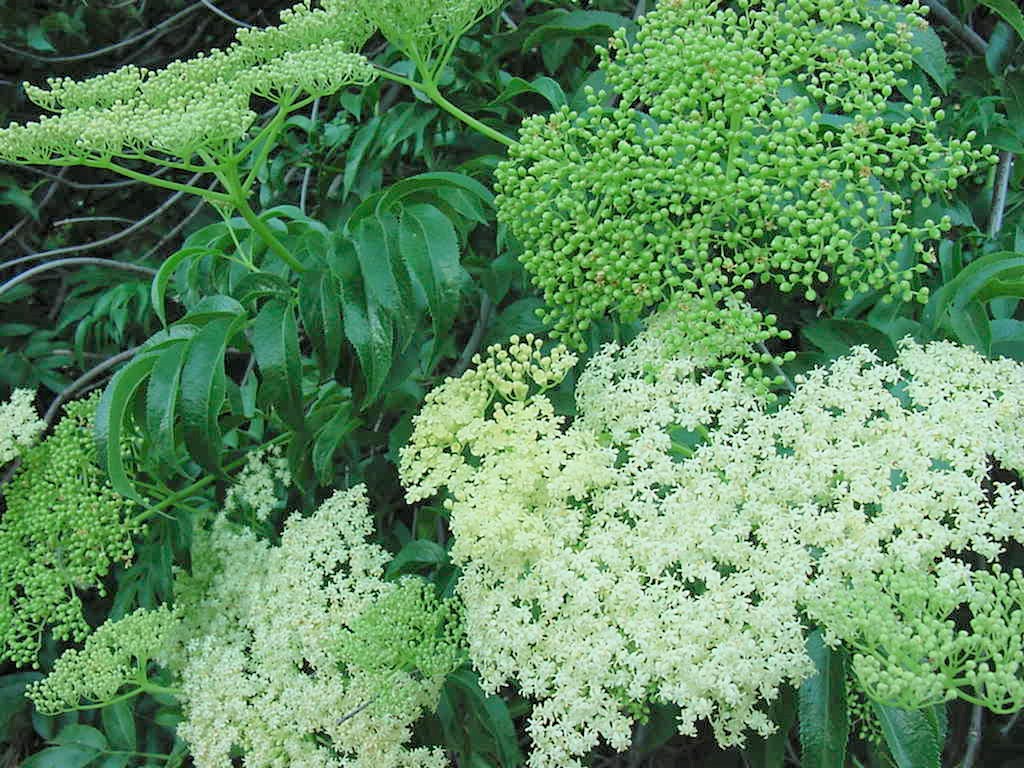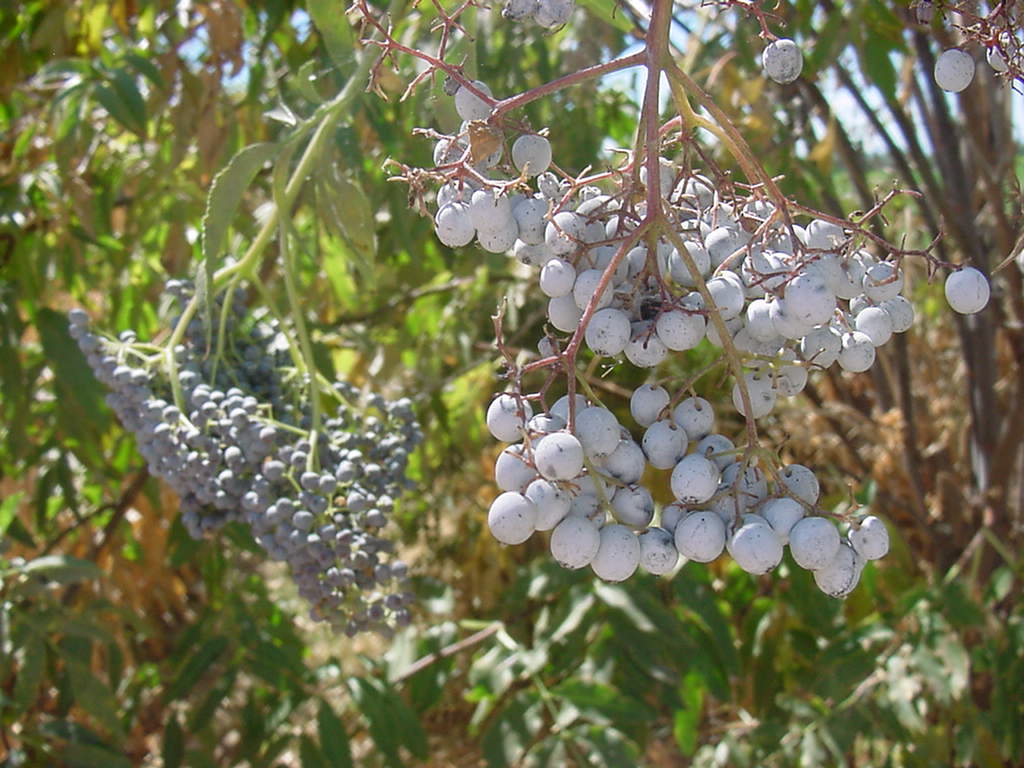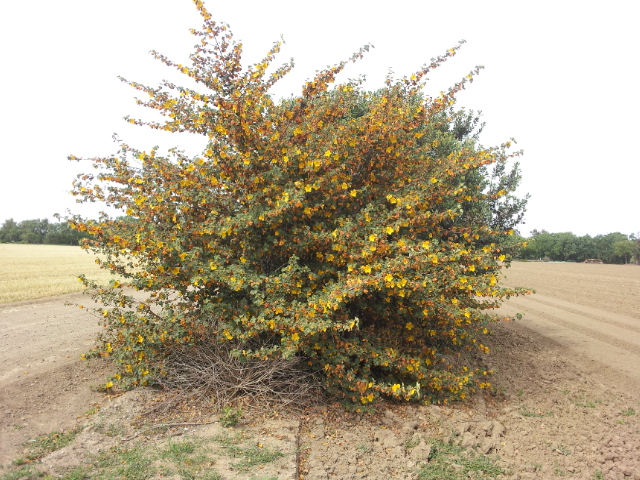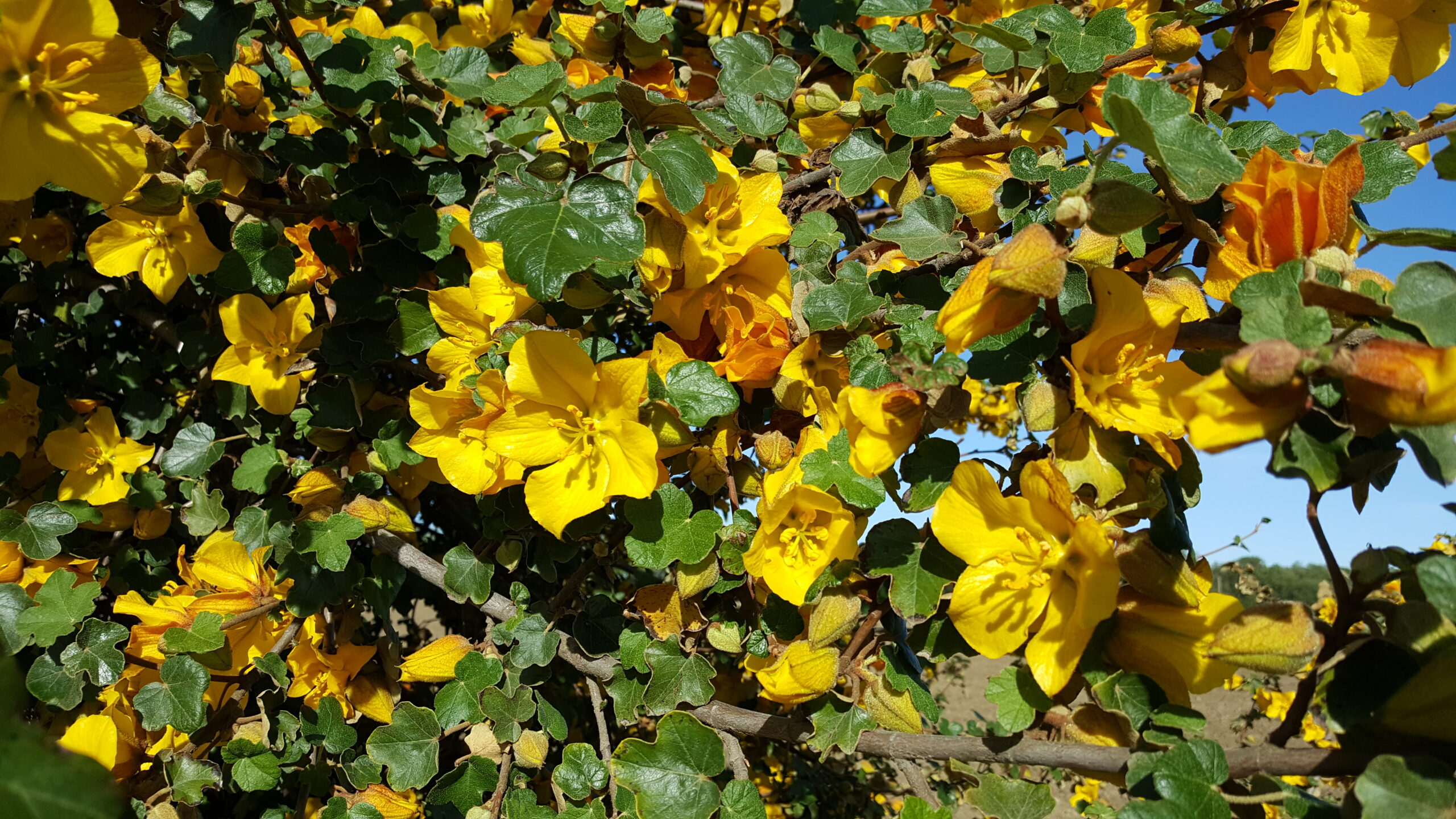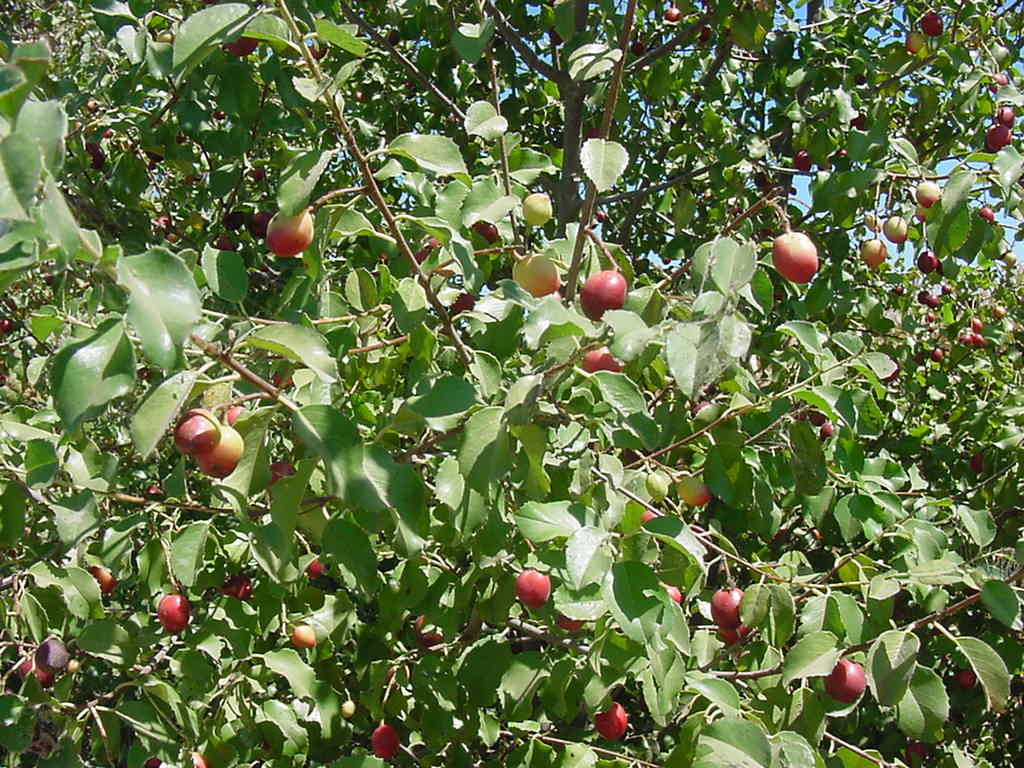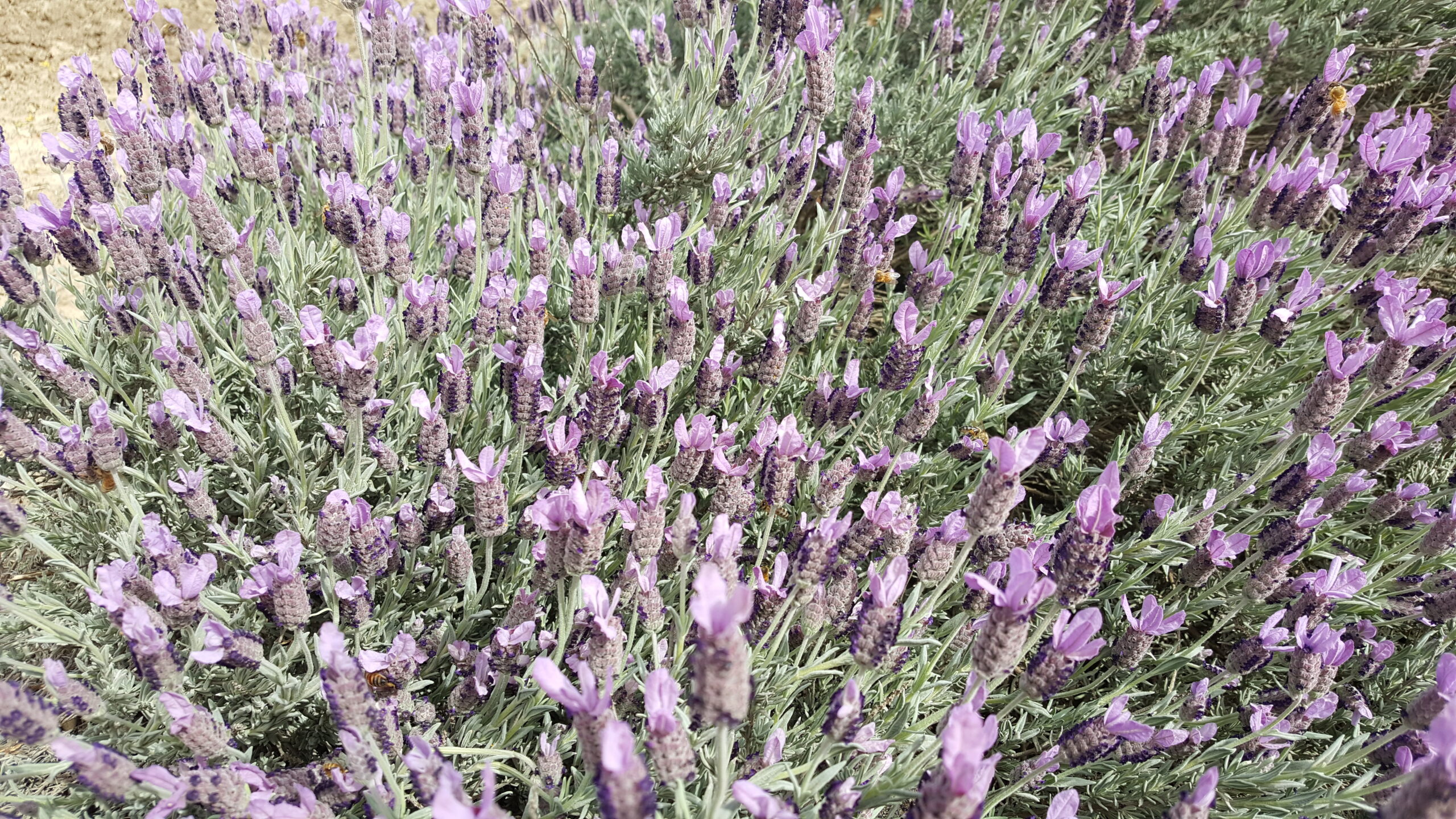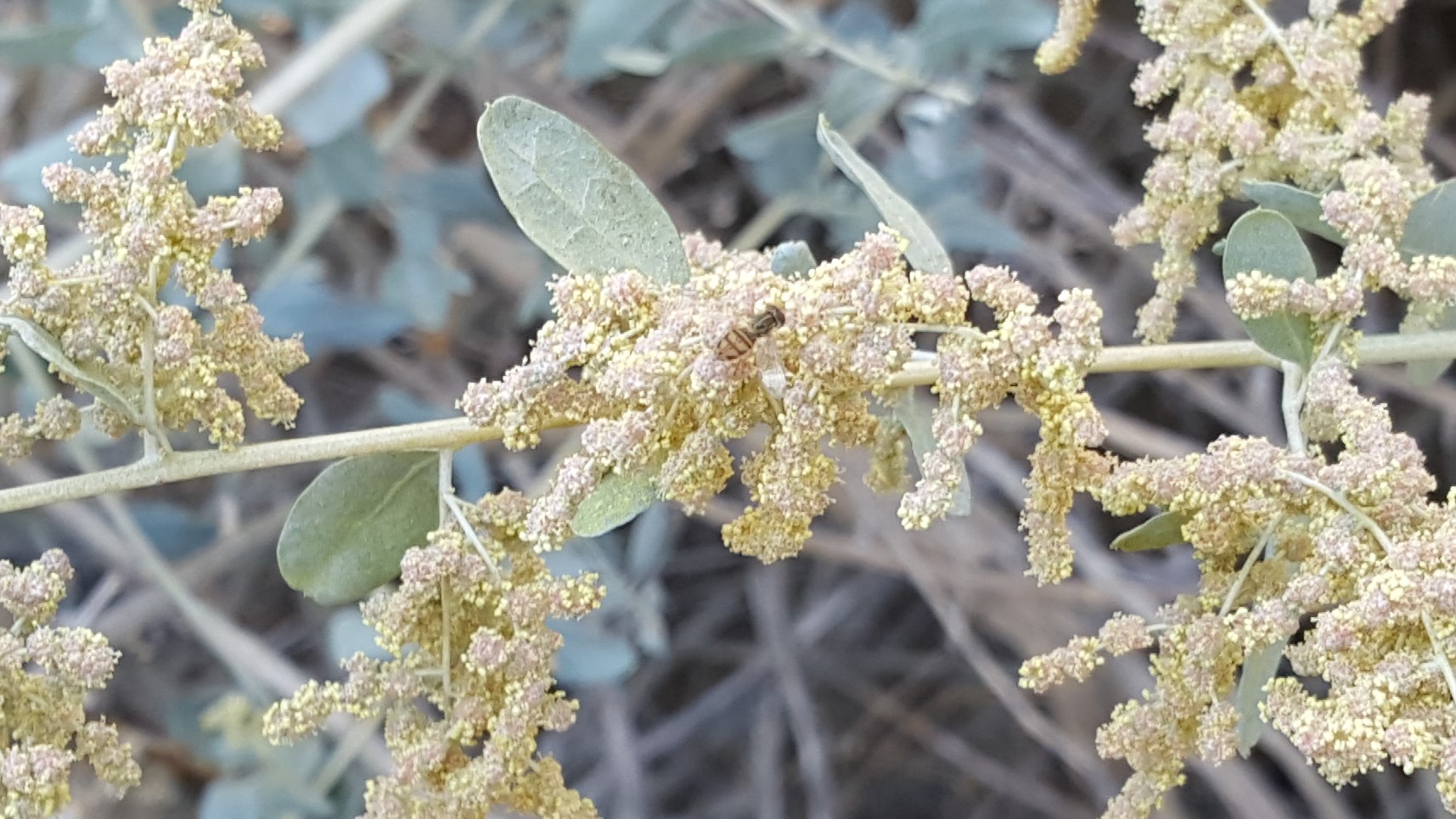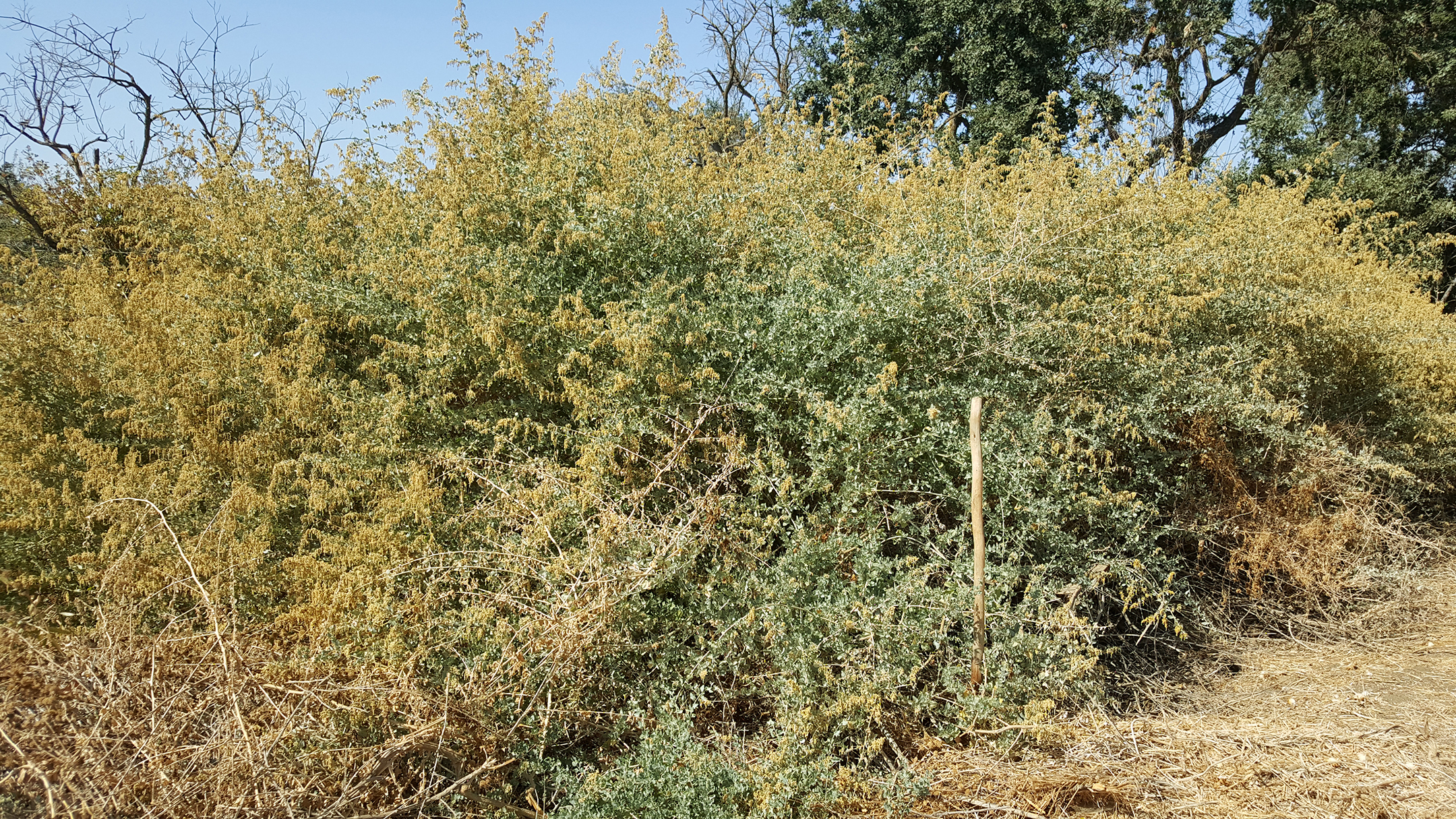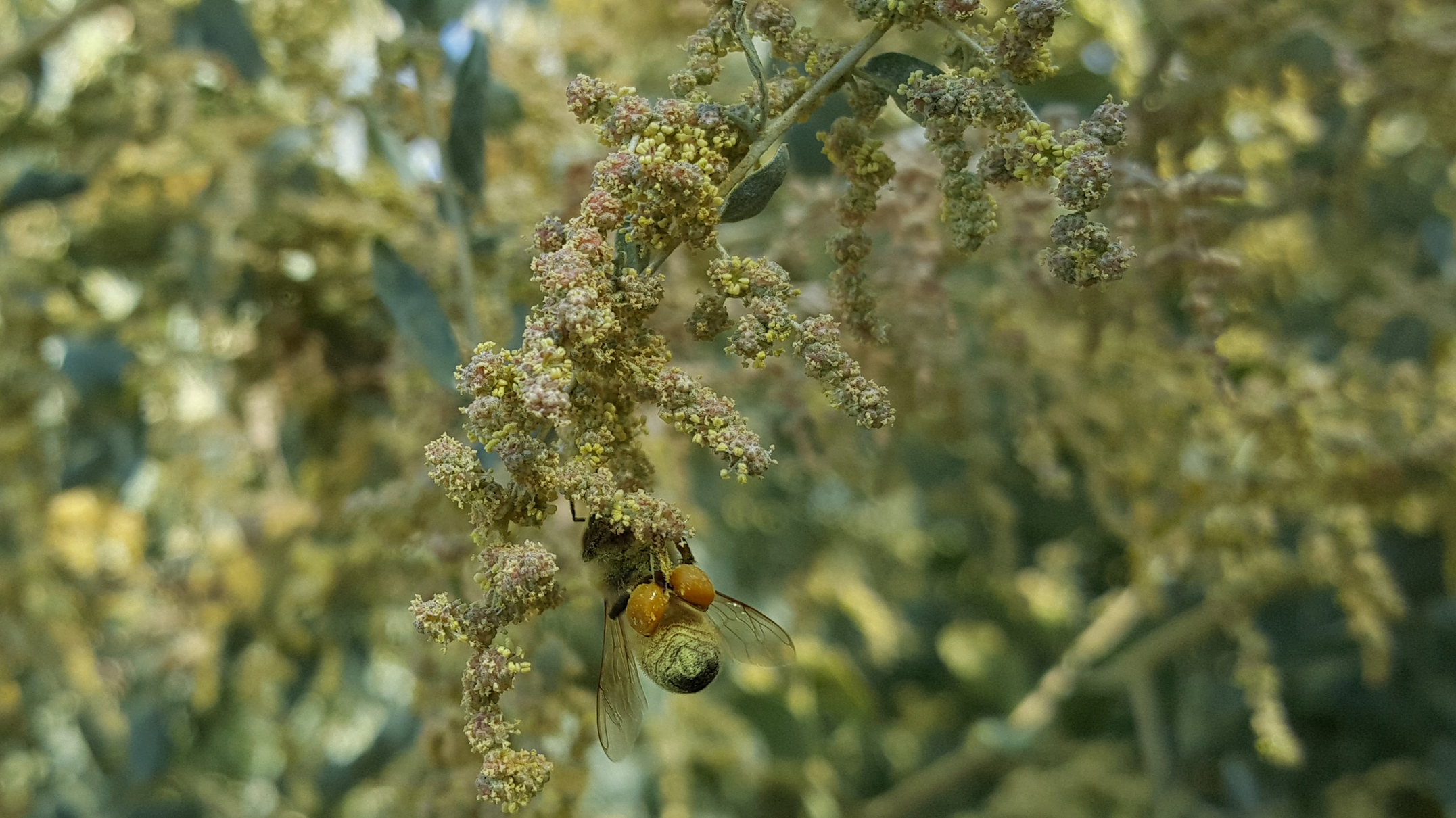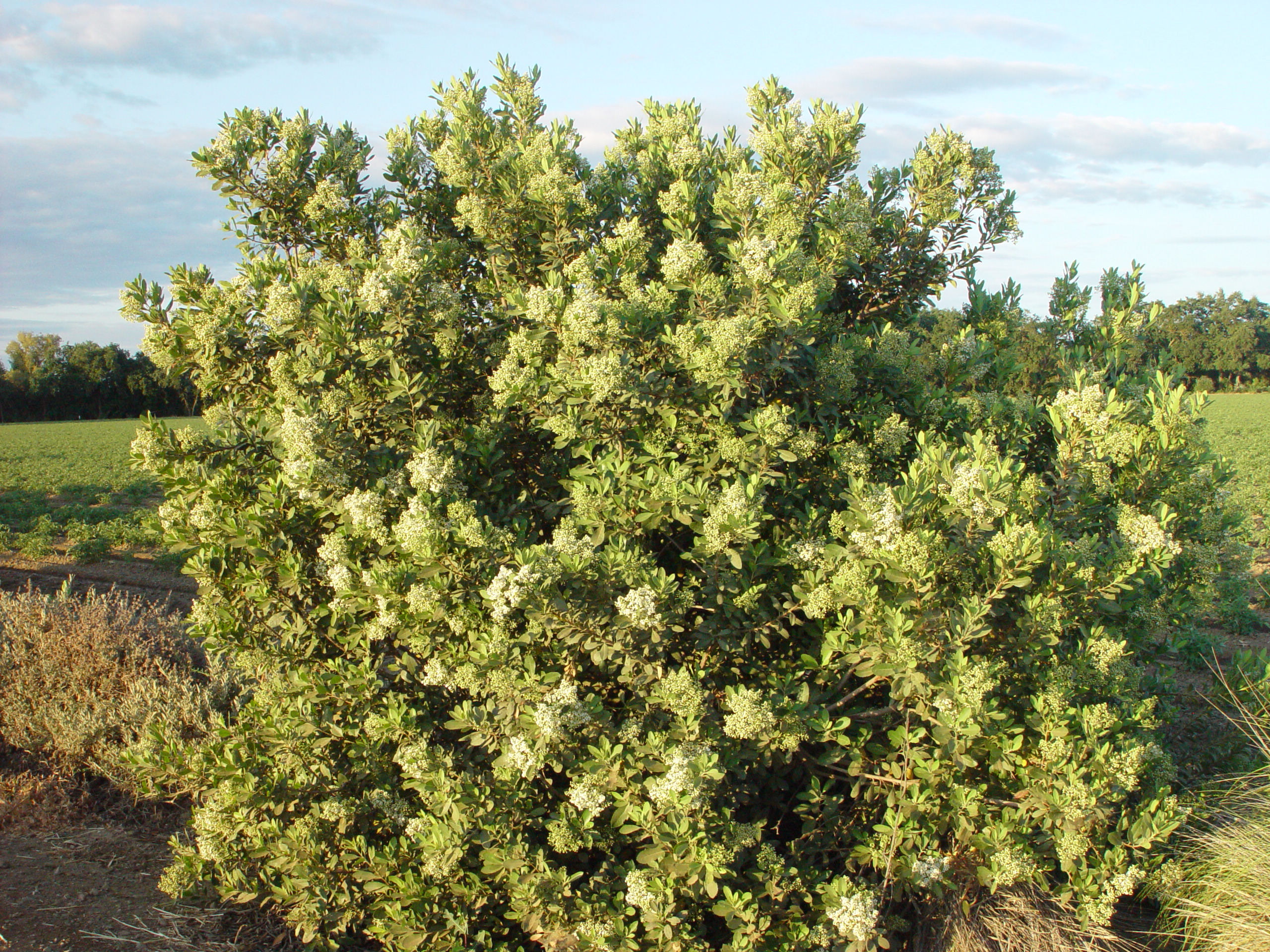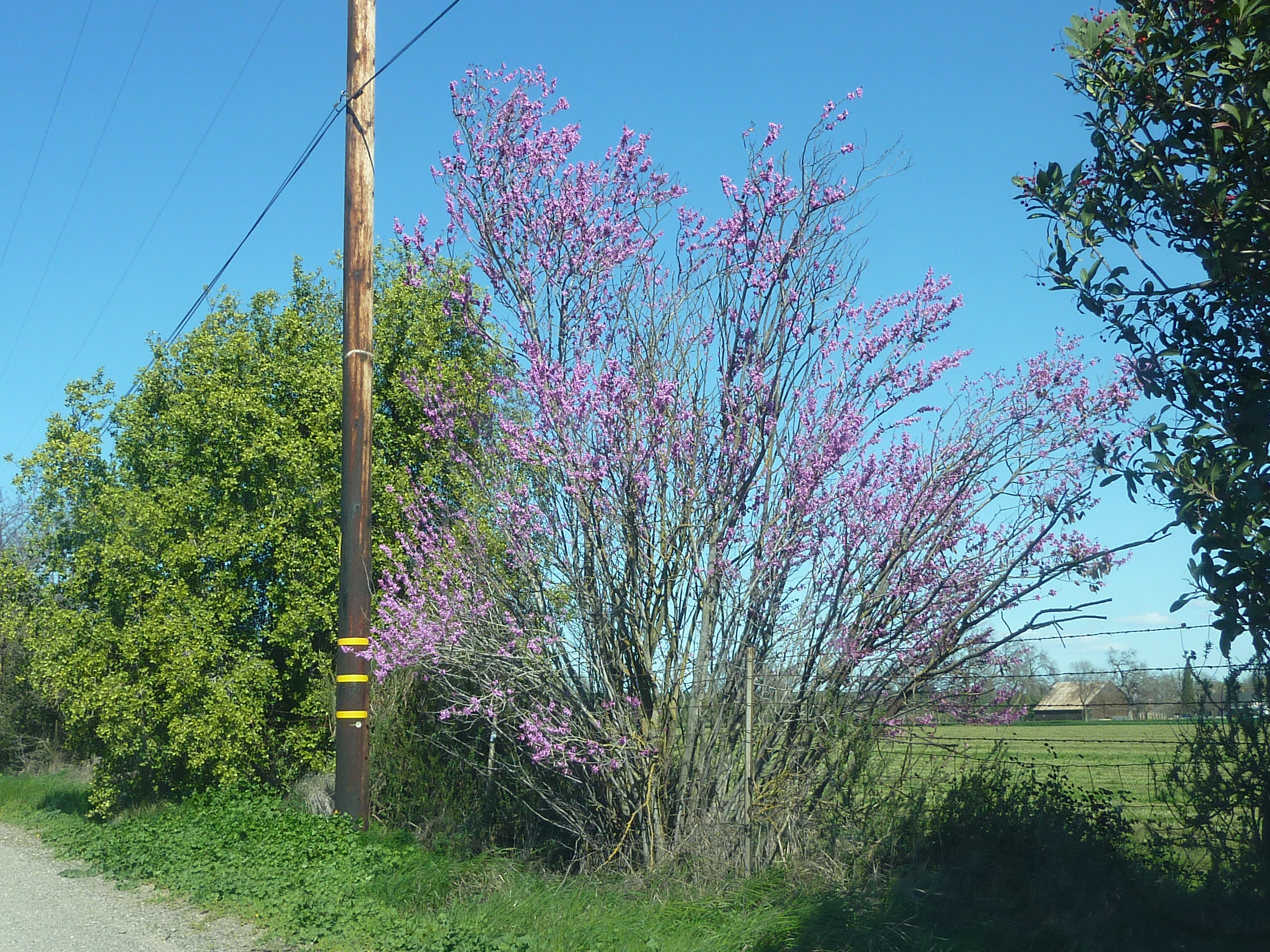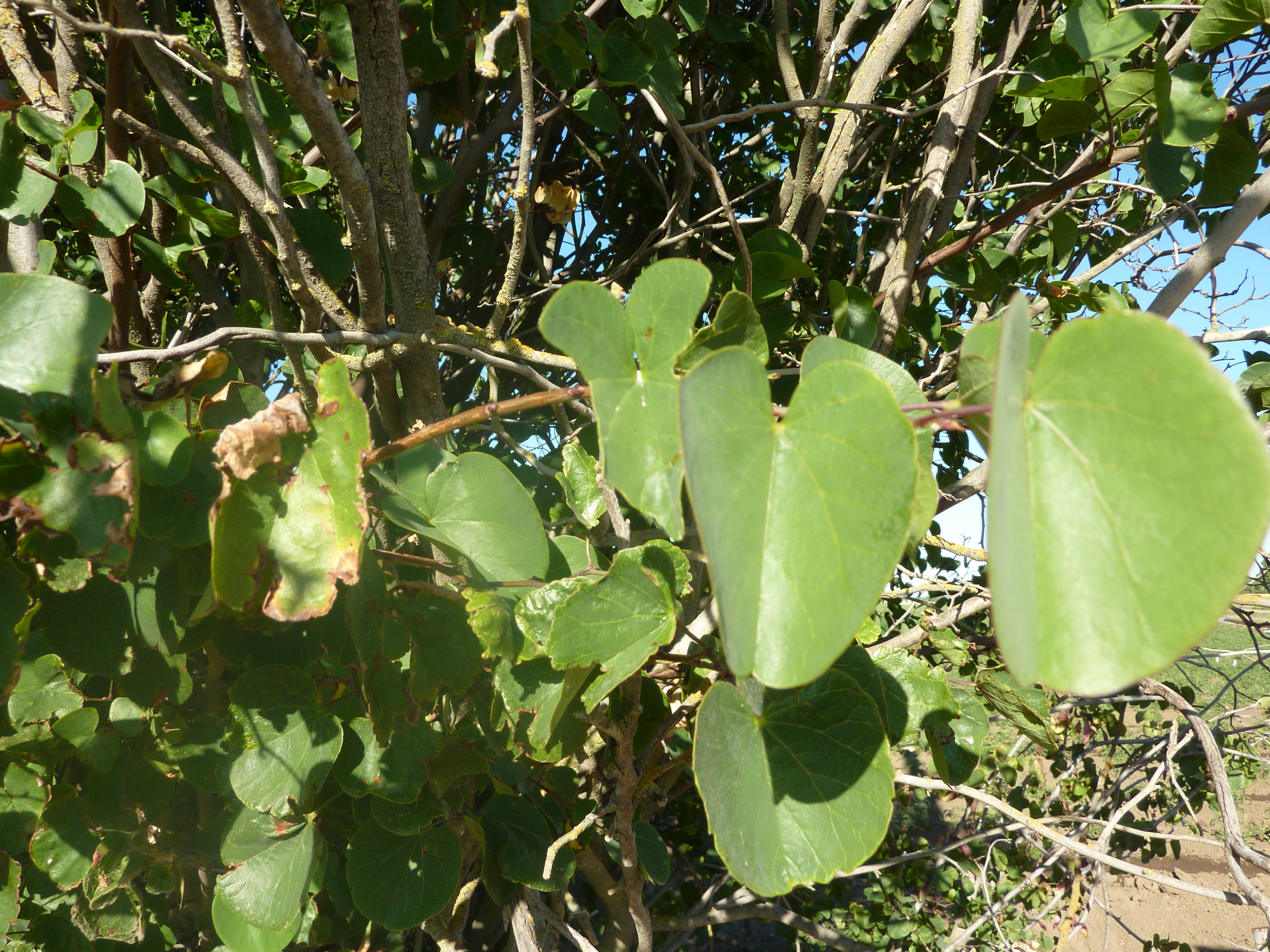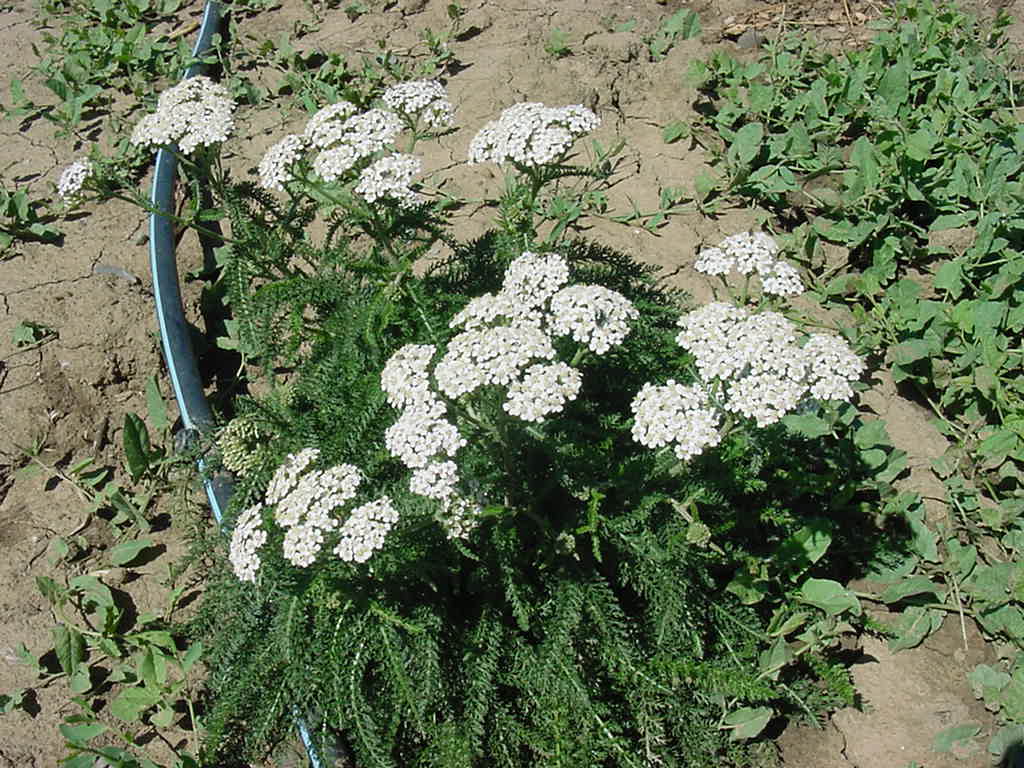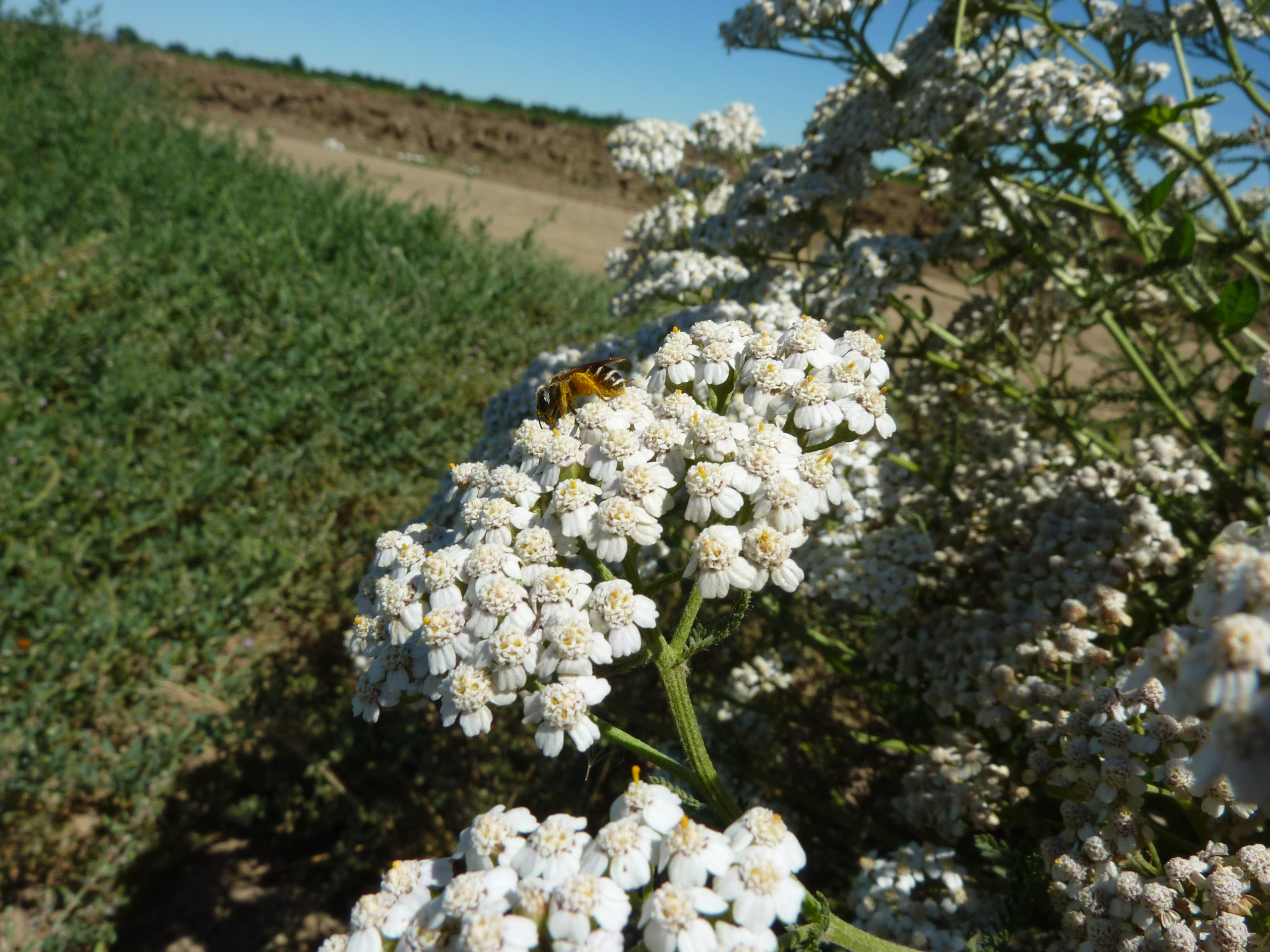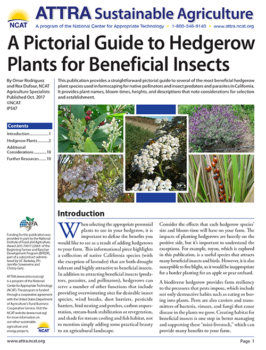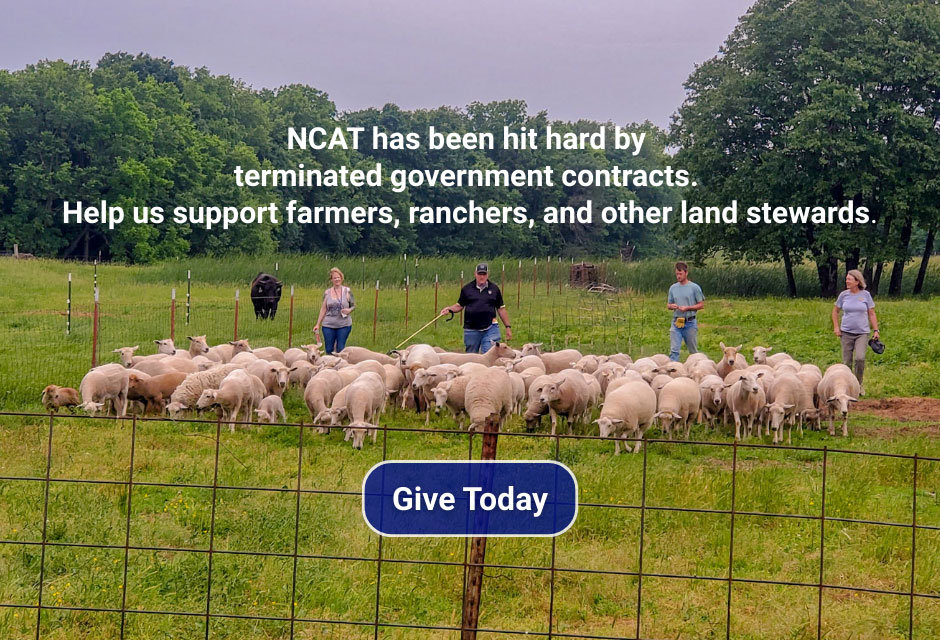A Pictorial Guide to Hedgerow Plants for Beneficial Insects
By Omar Rodriguez and Rex Dufour, NCAT Agriculture Specialists
Introduction
When selecting the appropriate perennial plants to use in your hedgerow, it is important to define the benefits you would like to see as a result of adding hedgerows to your farm. This informational piece highlights a collection of native California species (with the exception of lavender) that are both drought tolerant and highly attractive to beneficial insects. In addition to attracting beneficial insects (predators, parasites, and pollinators), hedgerows can serve a number of other functions that include providing overwintering sites for desirable insect species, wind breaks, dust barriers, pesticide barriers, bird nesting and perches, carbon sequestration, stream-bank stabilization or revegetation, and shade for stream cooling and fish habitat, not to mention simply adding some practical beauty to an agricultural landscape.
Consider the effects that each hedgerow species’ size and bloom time will have on your farm. The impacts of planting hedgerows are heavily on the positive side, but it’s important to understand the exceptions. For example, toyon, which is explored in this publication, is a useful species that attracts many beneficial insects and birds. However, it is also susceptible to fire blight, so it would be inappropriate for a border planting for an apple or pear orchard.
A biodiverse hedgerow provides farm resiliency to the pressures that pests impose, which include not only destructive habits such as eating or boring into plants. Pests are also carriers and transmitters of bacteria, viruses, and fungi that cause disease in the plants we grow. Creating habitat for beneficial insects is one step in better managing and supporting these “mini-livestock,” which can provide many benefits to your farm.
Hedgerow Plants
California Buckwheat
Scientific name: Eriogonum fasciculatum
Mature height: 2 to 4 feet
Bloom time: April to September
Notes: Very drought tolerant, an important food source for many native bees and beneficial insects, including syrphid flies (also known as flower flies or hover flies), predatory wasps, pirate bugs, tachinid flies, and lady beetles. Full sun to partial shade. Blooms are creamy white, last through the summer, and turn an attractive rust color when they dry down.
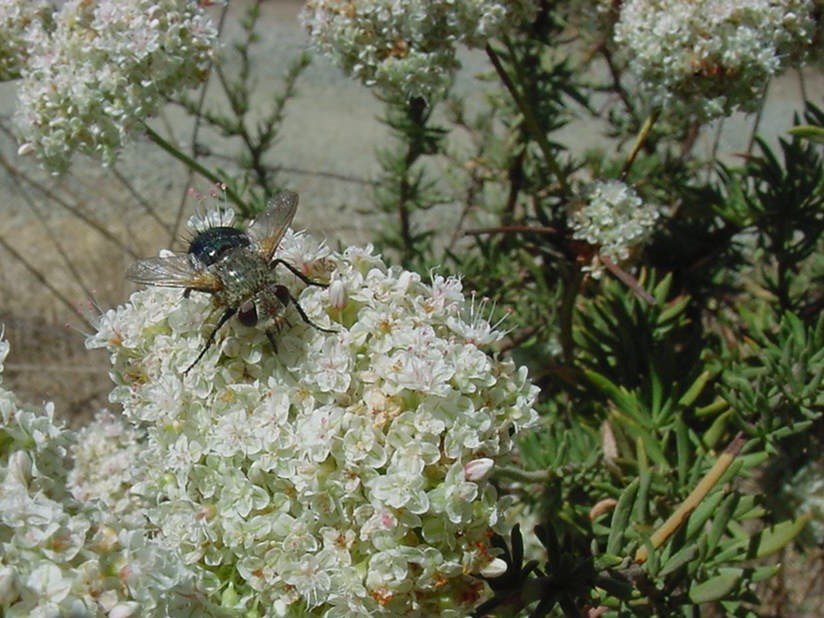
Tachinid fly on California buckwheat. Tachinid larvae are parasites of stinkbugs and other insects. Photo: Rex Dufour, NCAT
California Fuchsias
Scientific name: Epilobium canum
Mature height: 1 to 4 feet
Bloom time: July to October
Notes: May need help establishing through its first summer. Highly tolerant in a variety of substrates and one of the most attractive flowers to hummingbirds, which consume a variety of insects, including aphids. The bright-red, tubular flowers provide a welcome visual relief during the hottest, driest, and dustiest part of the season, as well as a nectar and pollen resource for beneficials.
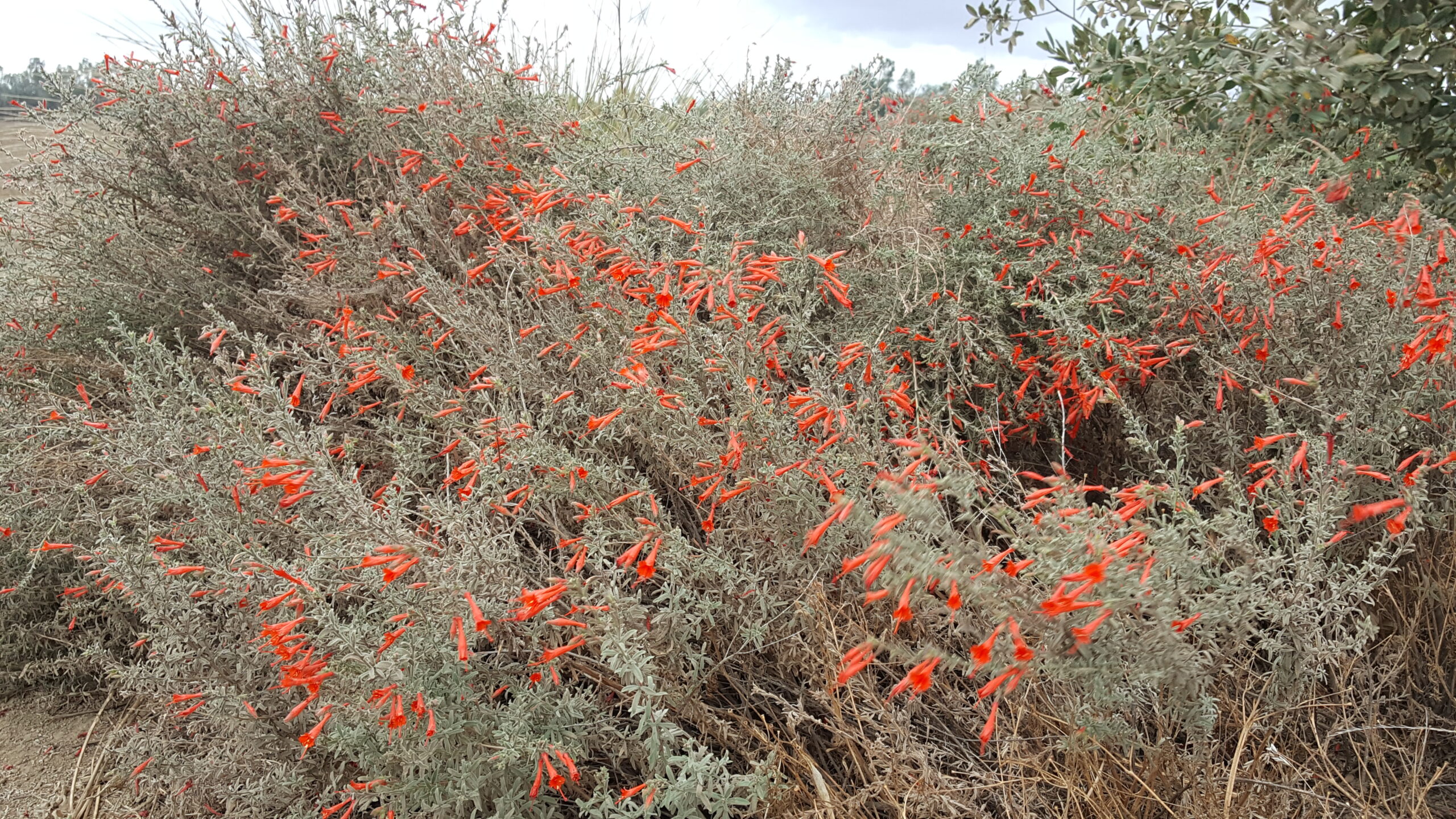
The bright red-orange flowers can offer beneficials a pollen and nectar source during the drier, dustier parts of the season, August and September. Photo: Rex Dufour, NCAT
Ceonothus/California Lilac
Scientific name: Ceanothus sp. (many varieties exist)
Mature height: 2 to 20 feet (depends on variety)
Bloom time: March to May
Notes: These plants are nitrogen fixers and occur naturally on dry slopes across North America and as far south as Guatemala. Ceanothus does not require summer irrigation after it has been established. Its blue flowers attract many pollinators early in the season, and its foliage maintains a dense green color all year long. Comes in tall and prostrate cultivars. Deer like to browse on this plant.
Cleveland Sage
Scientific name: Salvia clevelandii
Mature height: 3 feet
Bloom time: April to August
Notes: Has attractive flowers, inviting to several bee species, butterflies, and hummingbirds. Leaves are very aromatic. Prefers good drainage; can tolerate full sun. Watering in early stages will help it establish, but it does well in drought conditions.
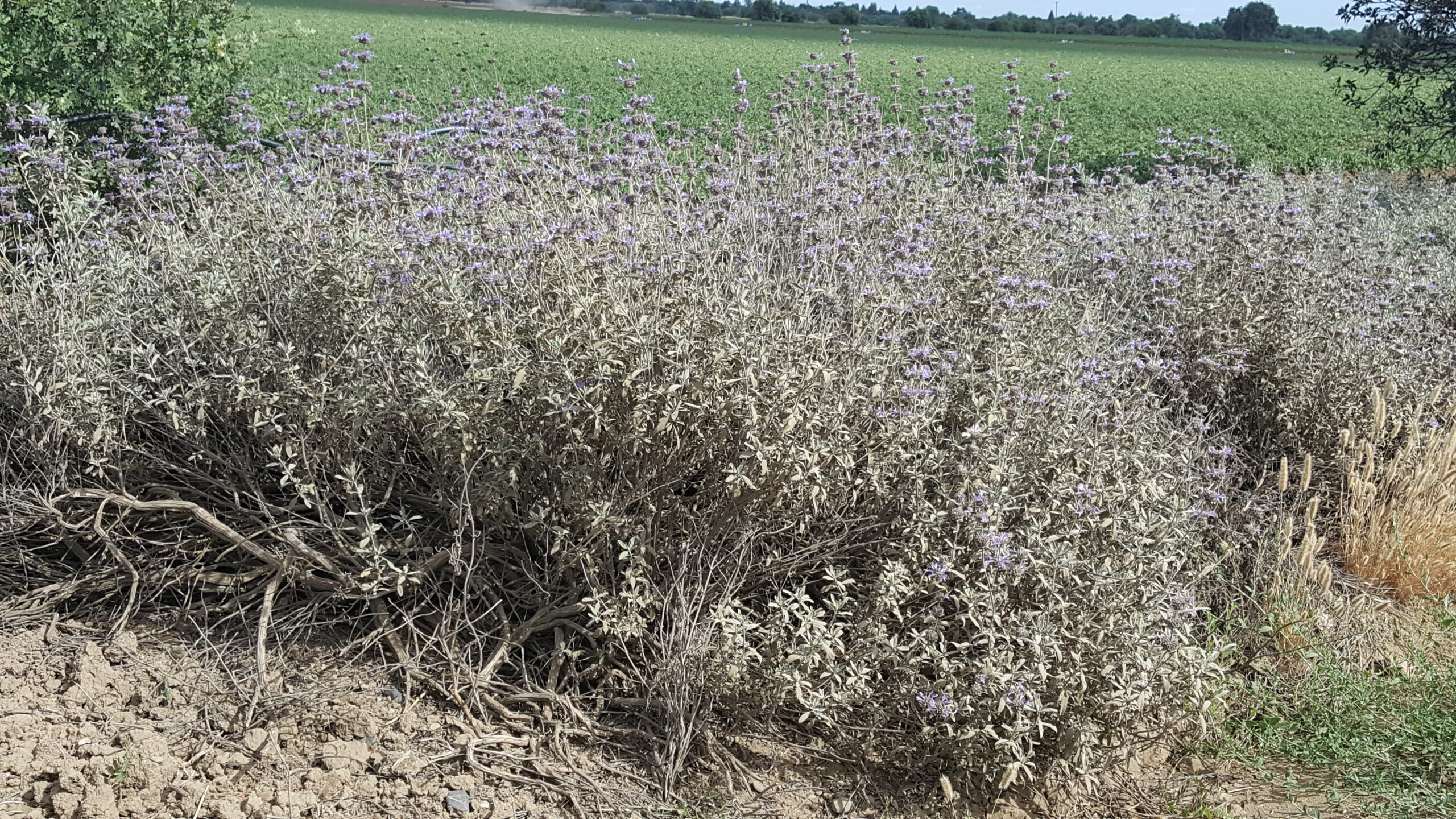
Cleveland sage in bloom. It will spread nicely to coverground and smother weeds. Photo: Rex Dufour, NCAT
Coffee Berry
Scientific name: Frangula californica
Mature height: 6 to 15 feet
Bloom time: April to June
Notes: An insect-pollinated plant that attracts a large range of beneficial insects: honey bee, native bees, and flies. It has a relatively short bloom period.
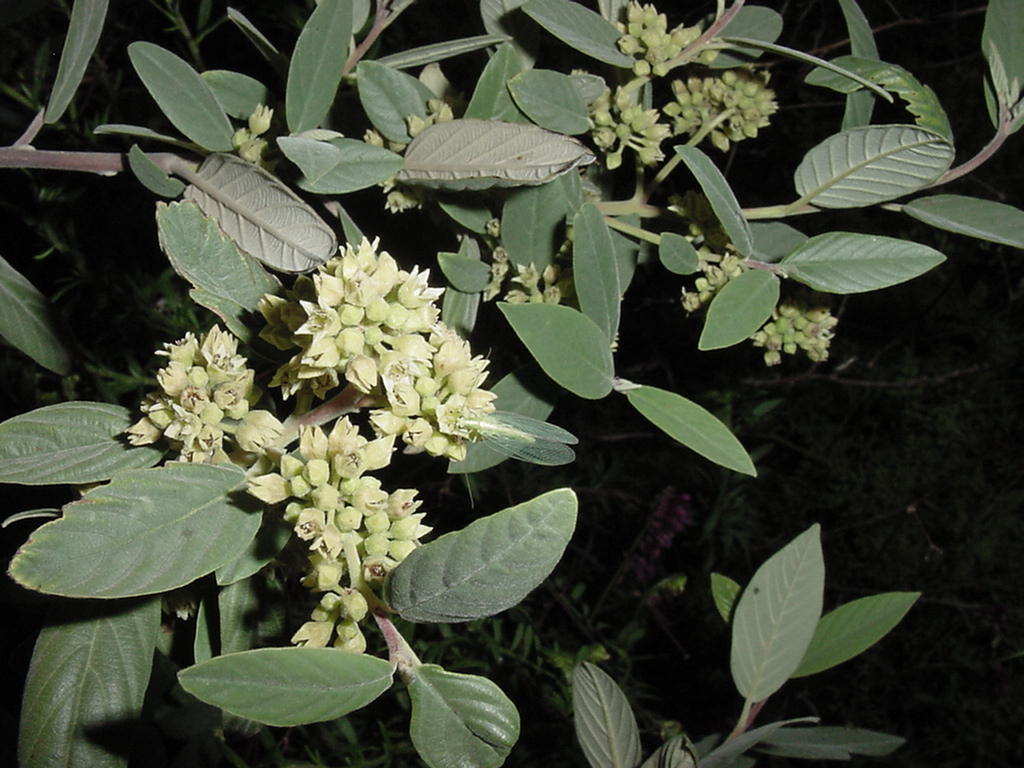
Green lacewing adult feeding on coffee berry nectar and pollen. Lacewing larvae are voracious predators of aphids and other softbodied insects (mealybugs, small caterpillars, psyllids). Photo: Rex Dufour, NCAT
Coyote Bush
Scientific name: Baccharis pilularis
Mature height: 6 to 12 feet
Bloom time: November to February
Notes: Beneficial insectary and wildlife habitat, which hosts many insects even when not in bloom. Very good winter pollen/nectar source. Has male and female plants, and female flowers develop “fluffy” blooms once they develop seeds. Choose between prostrate (up to 3.5 feet high) and non-prostrate (12 feet high) varieties.
Deergrass
Scientific name: Muhlenbergia rigens
Mature height: 4 to 5 feet and 4 to 6 feet wide
Bloom time: May to September
Notes: Clumping grass; interior is good overwintering habitat for ladybird beetles, and seed spikes are good resting places for damsel and dragon flies. Native to most of California, Texas, and Mexico. Resilient to different soil types. It does best with full sun exposure but will tolerate some shade and is drought tolerant. Due to its abundant yield of seed, it is a great host plant for birds, as well as beneficial insects.
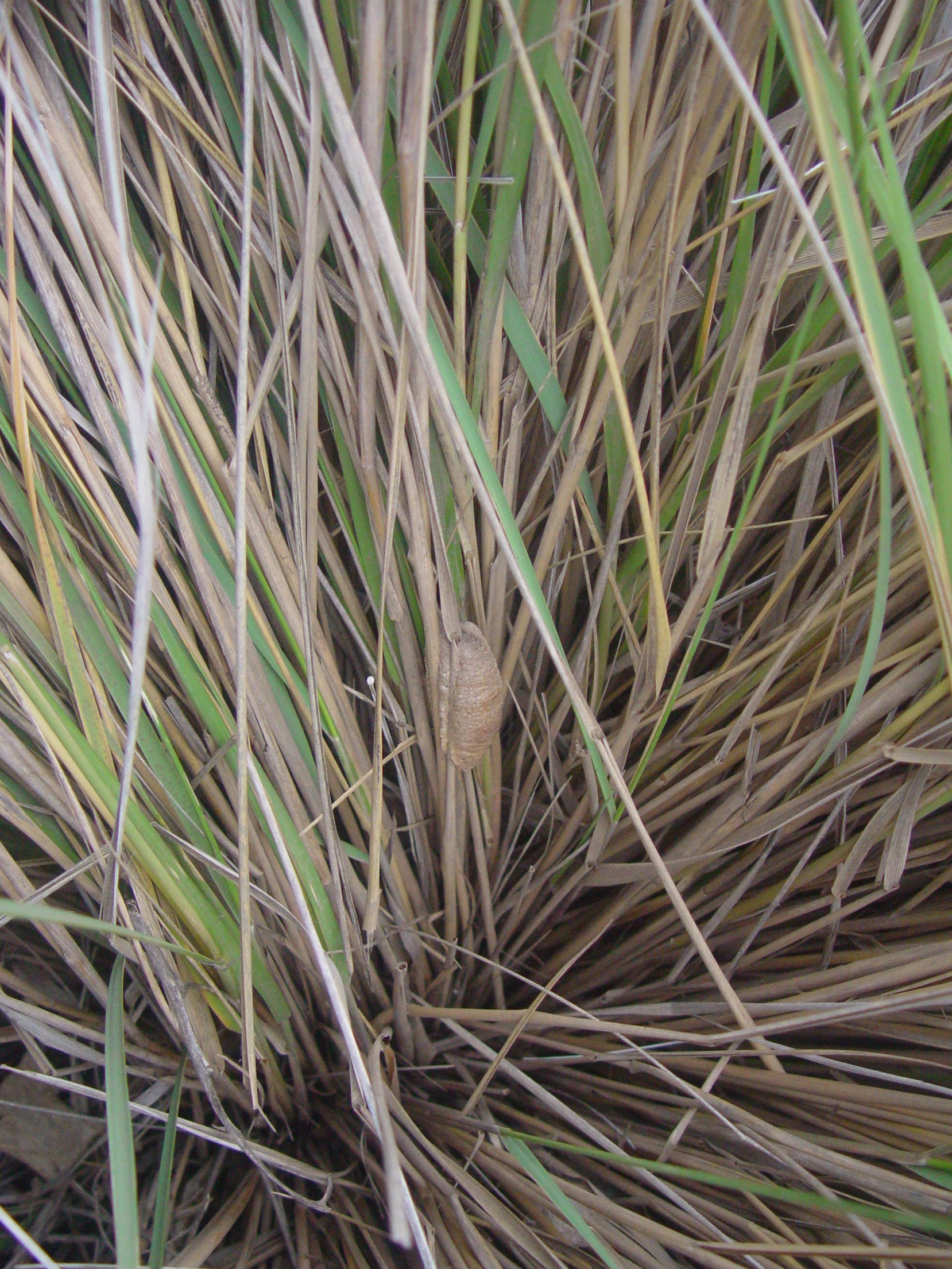
Praying mantis egg mass in the interior of deer grass bunch. Several dozen small praying mantids will emerge from this egg mass. Photo: Rex Dufour, NCAT

Lady bird beetles overwintering in deer grass. Groups of beetles emit an aggregation pheromone that attracts additional lady bird beetles. Photo: Rex Dufour, NCAT
Elderberry
Scientific name: Sambucus nigra
Mature height: 6 to 14 feet
Bloom time: May to August
Notes: Can be found in many riparian habitats throughout California and New Mexico. It grows quickly and will need regular watering in drier regions, about once every two weeks during the summer. Its flowers attract many beneficials. Flowers give way to fall berries that bring in many species of songbirds. Prefers full sun.
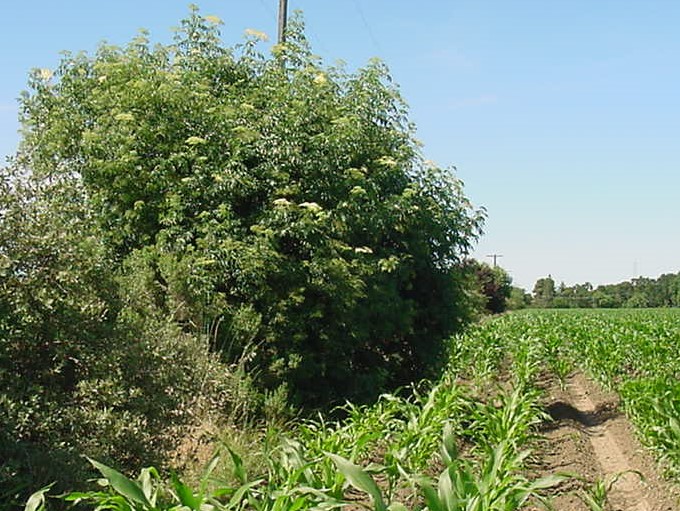
Elderberry in a hedgerow. Ideal as windbreak, dust barrier, and bird habitat, but may need some pruning of multiple stem base. Photo: Rex Dufour, NCAT
Flannel Bush
Scientific name: Fremontodendron californicum
Mature height: 8 to 25 feet
Bloom time: April to June
Notes: Has many large, bright-yellow blooms that attract bees, wasps, and flies of many species. Grows rapidly and is drought tolerant.

The large flowers with easily accessed pollen are very attractive to honey bees. Photo: Rex Dufour, NCAT
Hollyleaf Cherry
Scientific name: Prunus ilicifolia
Mature Height: 8 to 20 feet
Bloom Time: April to May
Notes: Very attractive to native bees and parasitic flies.
Can grow quite large under favorable growth conditions; prune to shape.
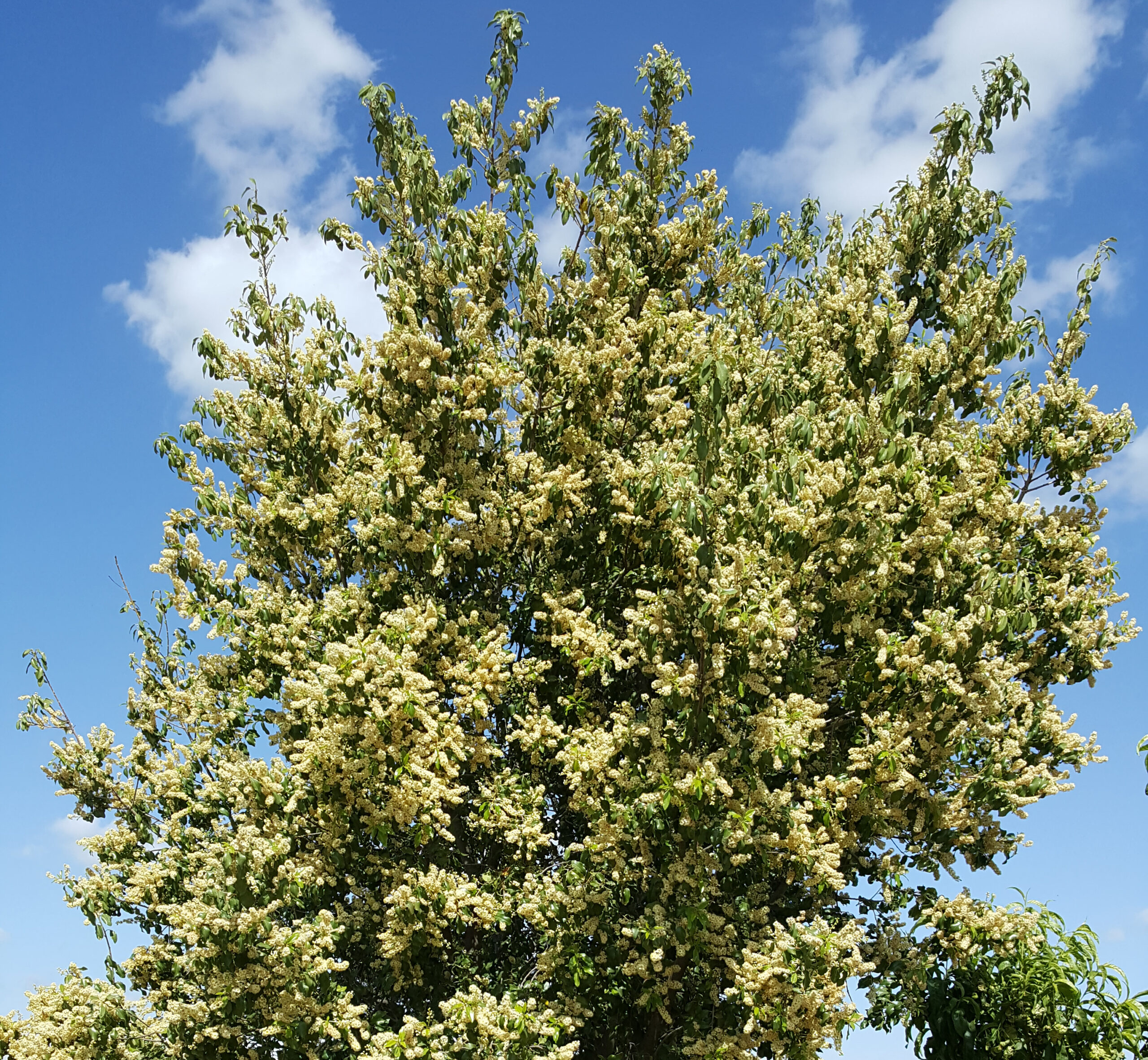
A holly leaf cherry tree in full bloom represents a gold mine of pollen and nectar for beneficial insects. Photo: Rex Dufour, NCAT
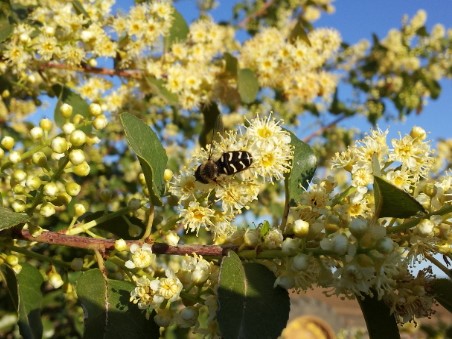
Syrphid fly on hollyleaf cherry blossom. Although the bloom time is a relatively short two weeks for an individual plant, when these are in bloom, the buzz of thousands of insects can be heard. Photo: Rex Dufour, NCAT
Lavender
Scientific name: Lavandula sp.
Mature height: 1 to 4 feet
Bloom time: June to August
Notes: Lavender is not native to California, but it is a favorite of both native bees and honeybees. This woody shrub is drought tolerant and flourishes in dry, well-drained soils.
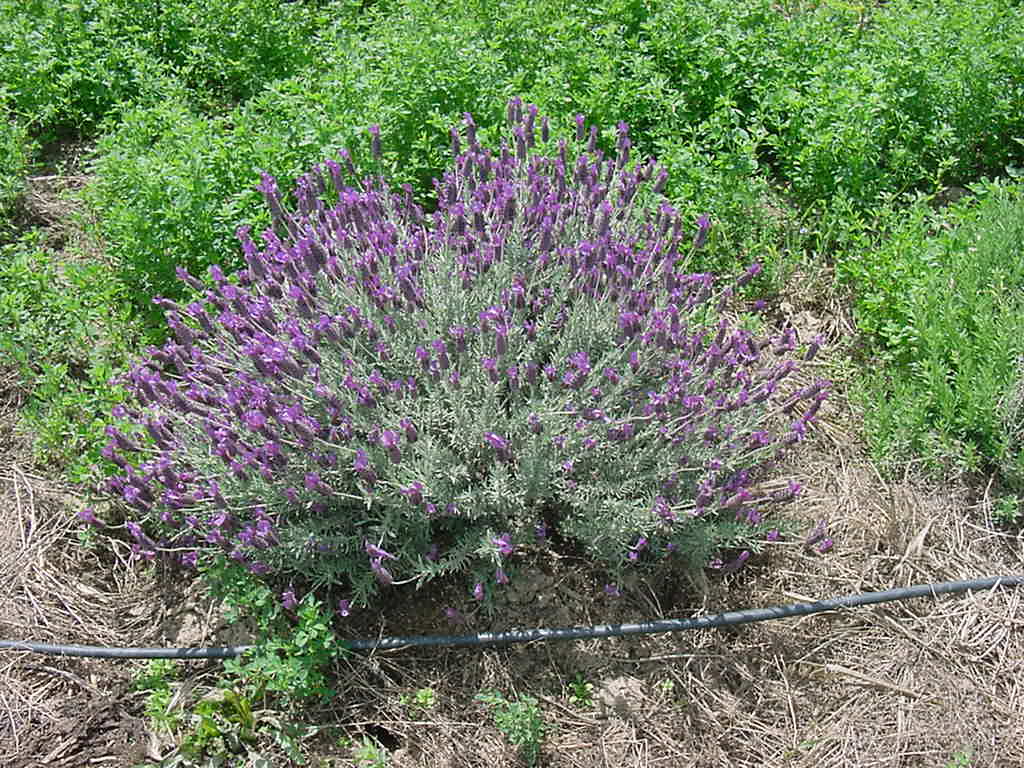
Lavender in bloom. Although not native to California, it does very well in this Mediterranean climate. Photo: Rex Dufour, NCAT
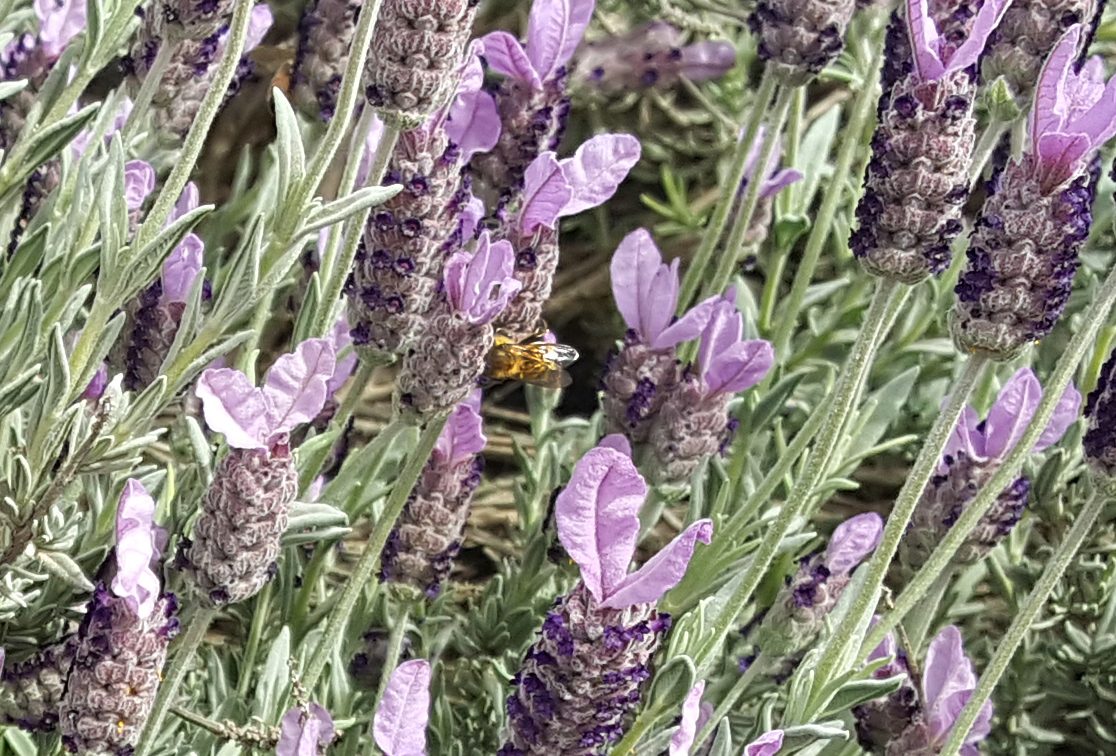
Lavender is popular with bees and some beekeepers believe lavender nectar provides medicinal benefits to their bees. Photo: Rex Dufour, NCAT
Narrowleaf Milkweed
Scientific name: Asclepias fascicularis
Mature height: 2 to 4 feet
Bloom time: June to September
Notes: This plant is host for the Monarch butterfly larvae and the bright-yellow oleander aphid, which does not attack commercial food crops in California. The oleander aphids provide alternate prey for syrphid fly larvae, green lacewing larvae, ladybird beetles, and the aphid is an alternate host for several parasitic wasps.
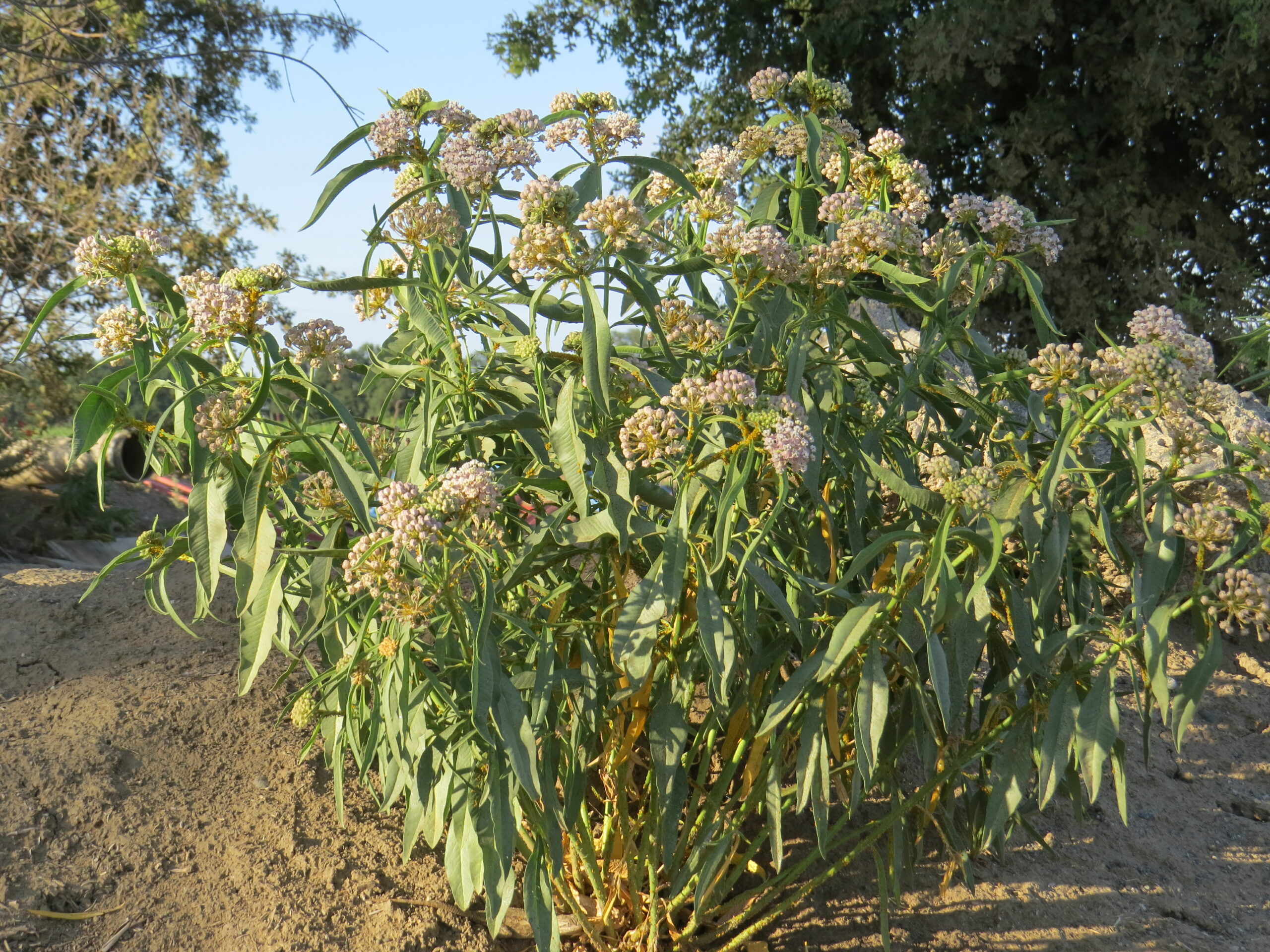
Narrowleaf milkweed in bloom. Planting these will provide habitat for the monarch butterfly. Photo: Rex Dufour, NCAT
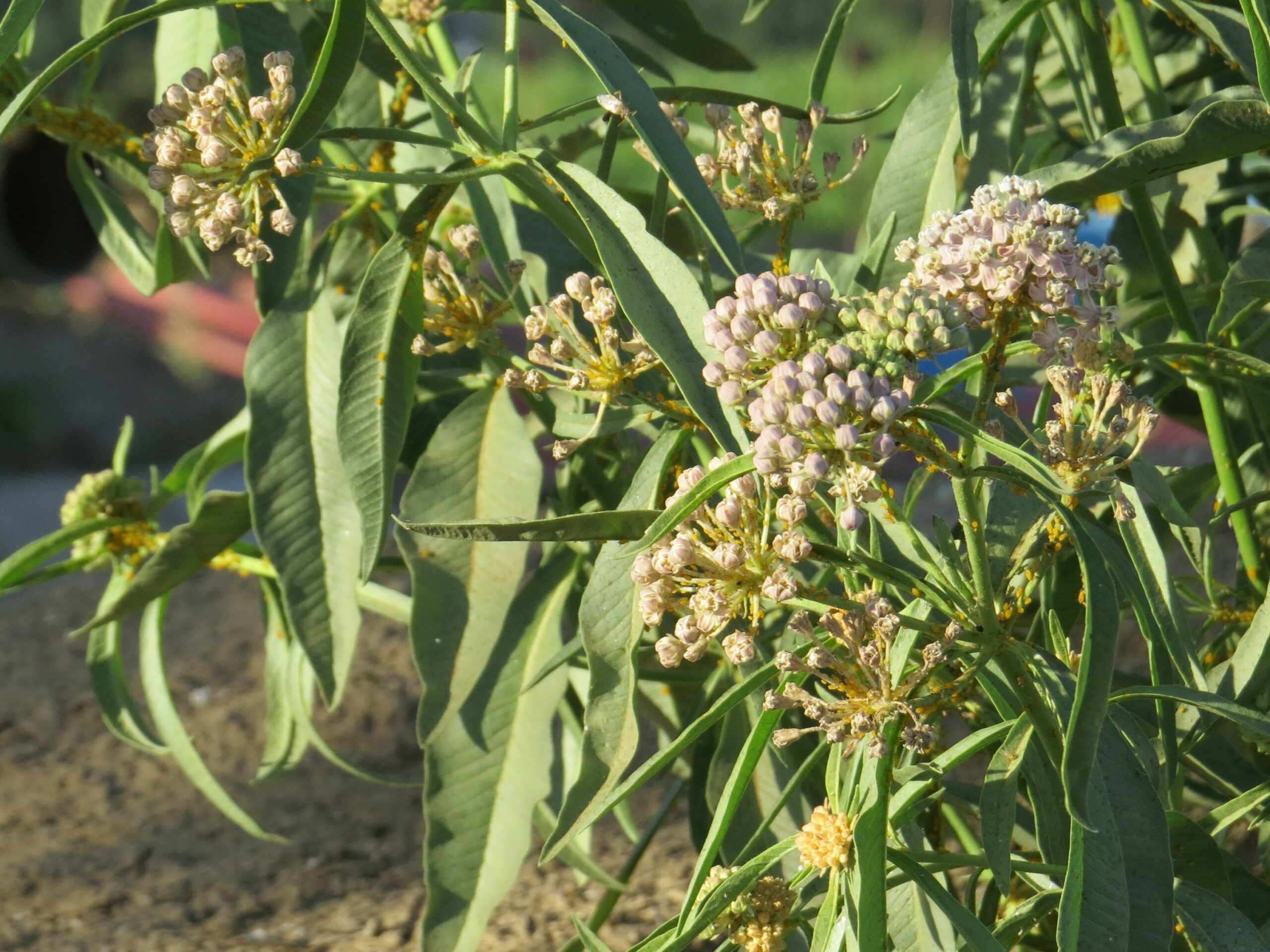
Close up of narrowleaf milkweed flowers in bloom. The yellow dots on the stems are oleander aphids, alternate prey for aphid parasites and predators. Photo: Rex Dufour, NCAT
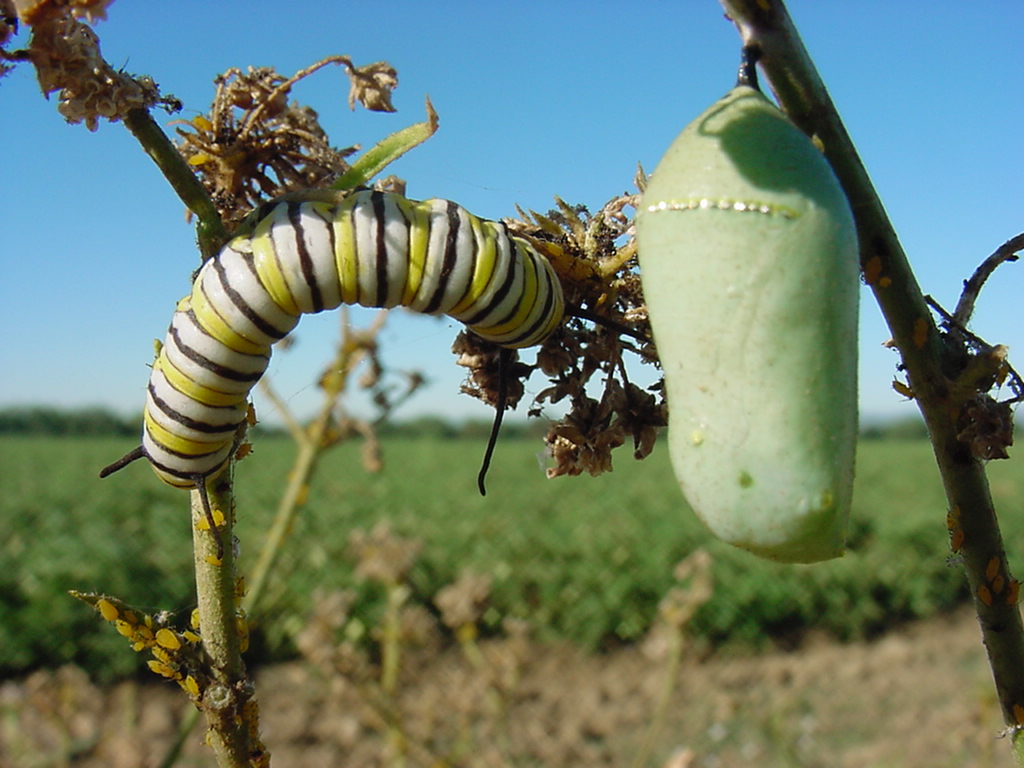
Monarch butterfly larva, chrysalis and oleander aphids on narrow leaf milkweed. Monarch butterfly populations have recently decreased dramatically and farmers can help provide habitat for these creatures. Photo: Rex Dufour, NCAT
Quailbush/Saltbush
Scientific name: Atriplex nummularia
Mature height: Up to 10 feet
Bloom Time: August to October
Notes: Saltbush is a drought-tolerant, native shrub in the daisy family that can be found throughout the western United States. Its services as a native pollinator attractant are valuable in that it flowers at a time of year when most other plants are dormant or have finished blooming. Additionally, it is an important nectar source for migrating monarch butterflies. Saltbush is tolerant of saline soils and competes well against weeds but can be somewhat aggressive in its growth.
Toyon
Scientific name: Heteromeles arbutifolia
Mature height: 8 to 20 feet and equally as wide
Bloom time: June to August
Notes: An evergreen shrub, also known as Christmas berry. White flower bunches attract bees; bright-red berries attract birds. It has a profuse root system that can help with erosion control and stabilizing hillsides. Susceptible to fireblight, so don’t plant with apples or pears.
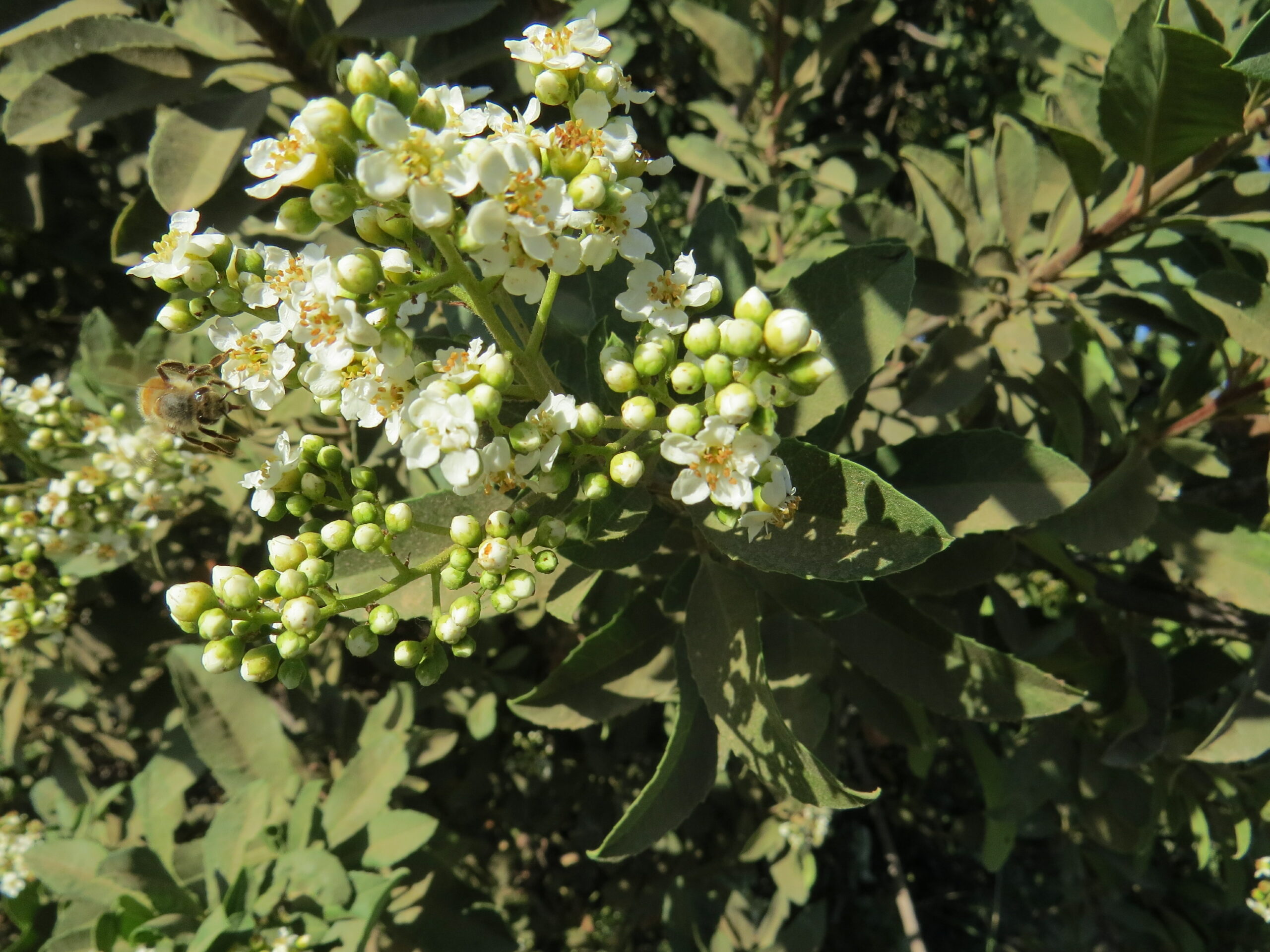
Toyon flowers and buds. Honey bees and many beneficials are attracted to toyon. Photo: Rex Dufour, NCAT
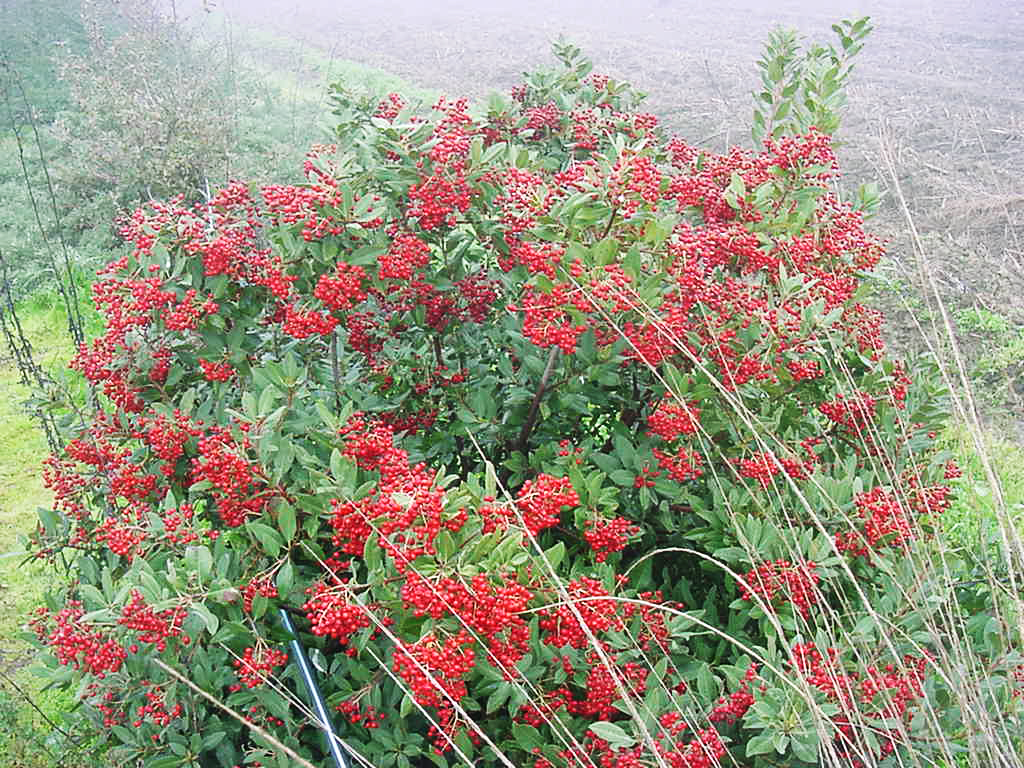
December toyon with red berries next to deer grass. It’s clear why toyon is also called “Christmas berry.” Photo: Rex Dufour, NCAT
Western Redbud
Scientific name: Cercis orbiculata
Mature height: 7 to 20 feet
Bloom time: March to May
Notes: Native to parts of California, Arizona, and Utah. It is drought tolerant once established but may require regular watering in desert environments. Full sun to partial shade, and it does best in well-drained soil. Attractive to many pollinators and beneficial insects and generally pollinated by bumble bees and mason bees. Leafcutter bees also like to use its soft new leaves to line their nests. Redbud also re-sprouts vigorously after fires.
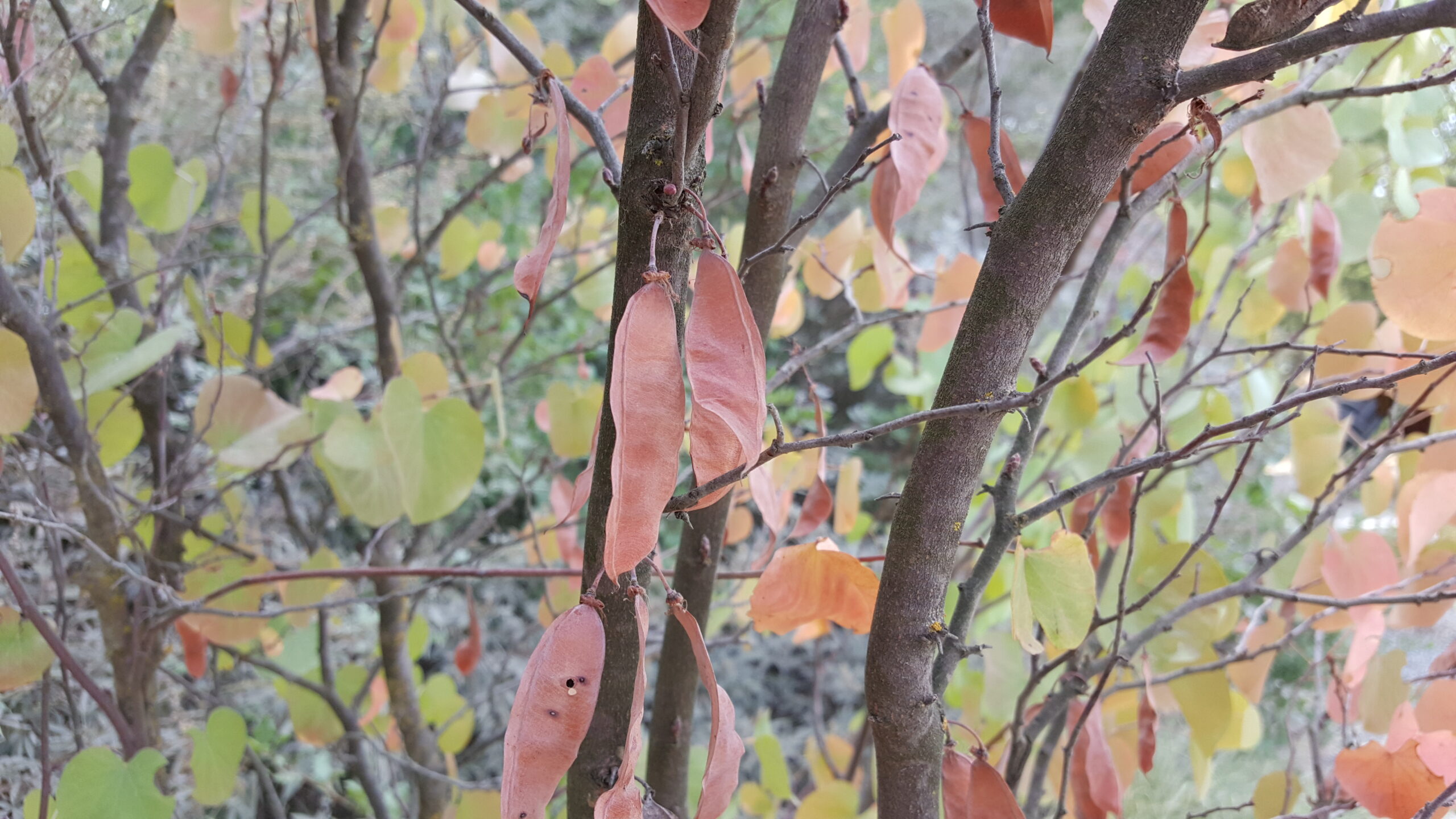
Redbud is in the legume family, and seeds can be collected for planting from the pods, shown here. Photo: Rex Dufour, NCAT
Yarrow
Scientific name: Achillea millefolium
Mature height: 1.5 to 3 feet
Bloom time: April to September
Notes: Yarrow, a hardy perennial, is attractive to a number of pollinators and predatory species like lady beetles and syrphid flies. There are pink (salmon-colored), yellow, and white varieties. It is very resilient, water needs are minimal (it doesn’t like wet feet), and it will establish itself in a variety of soil types.
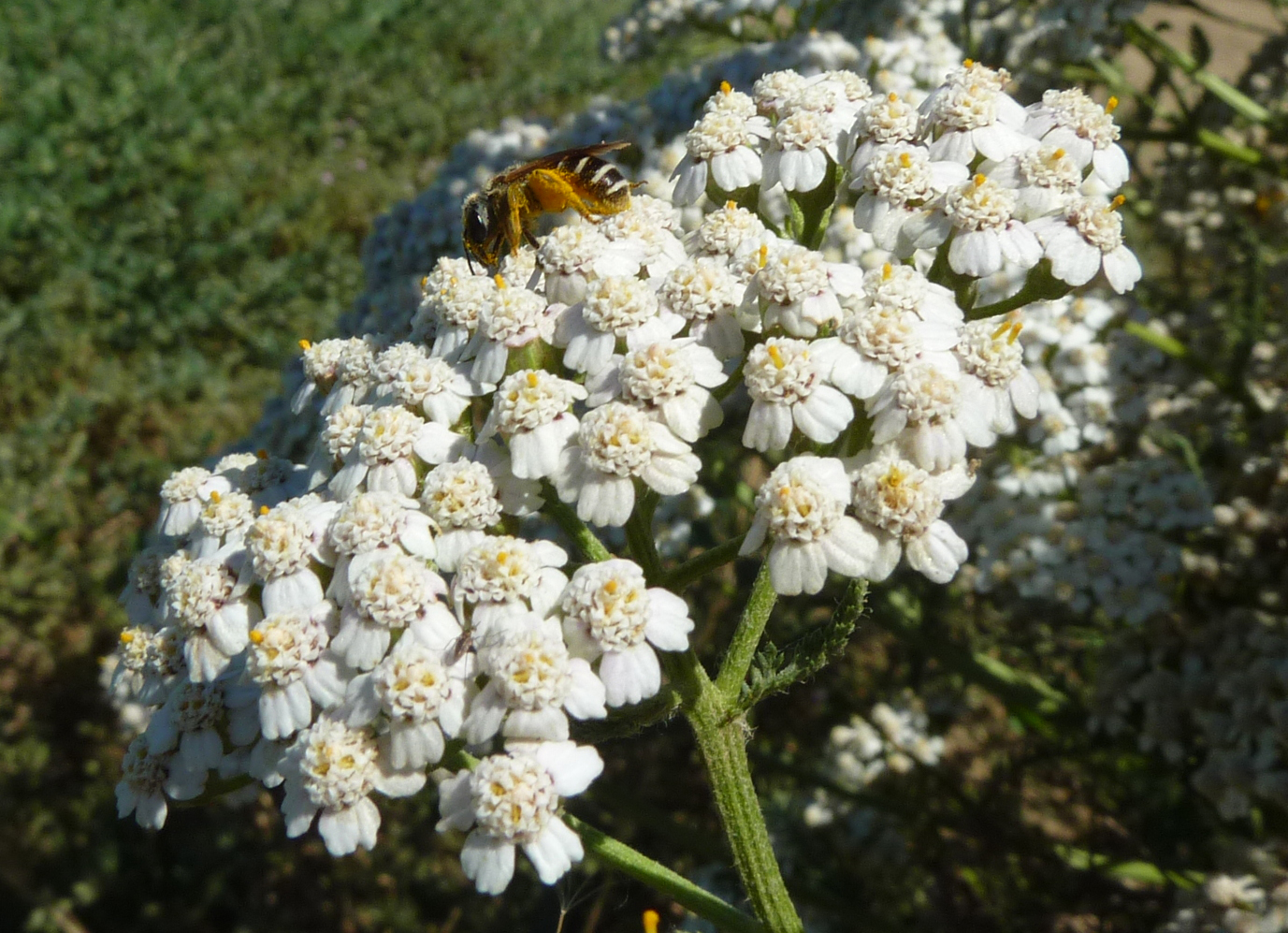
Native bees, which are often more effective pollinators than honey bees, are attracted to yarrow. Photo: Rex Dufour, NCAT
Additional Considerations
Potential hedgerow plants are available in a wide range of sizes and types from local nurseries specializing in native plants (see Further Resources, below). Ideally, hedgerows should be designed to include plants that bloom in different seasons to provide pollinators and other beneficial insects with food sources throughout the growing season. Structural diversity is also important in order to support a diverse ecology of beneficials. Finally, remember that hedgerow site preparation is important to successfully establishing a hedgerow. Weed competition needs to be minimized, either through solarizing, use of weed barriers, regular (and heavy) mulching, hand weeding, or use of herbicides.
A Pictorial Guide to Hedgerow Plants for Beneficial Insects
by Omar Rodriguez and Rex Dufour, NCAT Agriculture Specialists
Published Oct. 2017
©NCAT
IP547
This publication is produced by the National Center for Appropriate Technology through the ATTRA Sustainable Agriculture program, under a cooperative agreement with USDA Rural Development. This publication was also made possible in part by funding from the National Institute of Food and Agriculture, Award 2015-70017-22868 of the Beginning Farmer and Rancher Development Program (BFRDP), part of a subcontract administered by UC Berkeley, PI’s Jennifer Sowerwine and Christy Getz. ATTRA.NCAT.ORG

